Seafarers
BY



BY


Crews gear up for the digital age






“We have to show that being a seafarer is not a
— Karin Orsel, head of MF Shipping Group

21

“We need seafarers who can handle both a sextant and a screen”
“Bias, stereotypes, and inflexible career paths hold us back”
— Eva Rodríguez, HR marine director at Bernhard Schulte Shipmanagement
— Captain Rajalingam Subramaniam CEO of Fleet Management 39


53
“Technology is only as strong as its user interface and training”
“We need to start by understanding the business in five years and what skill sets will be needed”
— Su Yin Anand, partner at IBM Consulting
— Cyril Ducau, CEO of Eastern Pacific Shipping 63


65
“From performance to living conditions, the idea that ships are designed and built without user input seems utterly ridiculous”
— Steven Jones, founder of the Seafarers Happiness Index
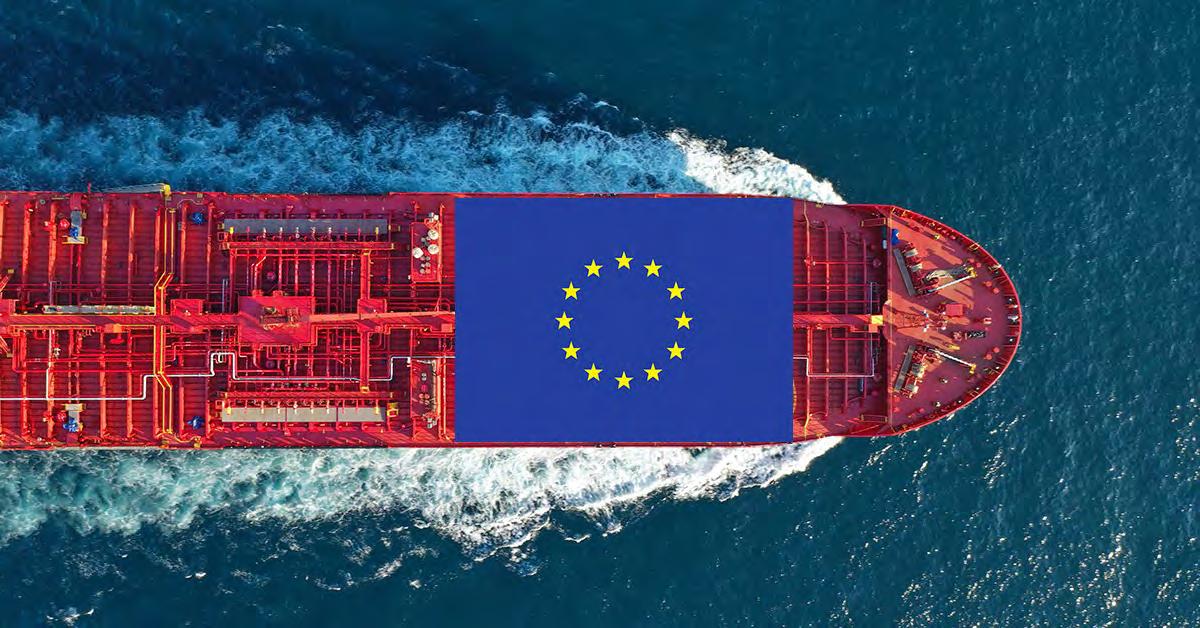
As a global leader in maritime solutions, the Synergy Marine Group is committed to helping shipowners navigate the complexities of the EU Emissions Trading System and FuelEU Maritime regulations. Our expertise in technical management, digitalisation and sustainable ship management practices ensures that your fleet remains compliant and efficient in an ever-evolving regulatory landscape.
Through our innovative decarbonisation arm, Azolla, we offer cutting-edge solutions to reduce greenhouse gas emissions and enhance fuel efficiency. By integrating advanced technologies and sustainable practices, Azolla helps clients achieve their environmental targets while maintaining operational excellence.
Join us in shaping green shipping.
Discover more about our innovative solutions and sustainability efforts:
• Compliance with EU ETS and FuelEU Maritime
• Technical Management Expertise
• Advanced Digital Solutions
• Sustainable Ship Management Practices


“I’d ensure that every seafarer has adequate rest and access to shore leave”
“One of the most damaging and problematic trends we have witnessed in ecent years and which we are hearing about repeatedly from seafarers is growing fatigue”
Peter Rouch, Secretary-general of the Mission to Seafarers
“Simplify the reporting regime and reduce administrative burden on our seafarers”
Wiebke Schuett, Vice president for marine personnel at Wilhelmsen Ship Management

“It would be for seafarers to be better appreciated for their contribution to our industry and to the global economy”
Captain Rajalingam Subramaniam, CEO of Fleet Management
Tim Hill, CEO of Stella Maris



“Introduce genuine empathy into how the industry treats seafarers”
Steven Jones, Founder of the Seafarers Happiness Index
“I would recommend better connectivity and quality time with the family”
Marlon Roño, President, Magsaysay People Resources Corporation

“The benefits package provided to seafarers to promote greater long-term security”
Laura Humby, Recruitment manager – crew recruitment, Faststream Recruitment

“I would bring back the pride and authority of the ship master to what it once was”
Vikrant Gusain, CEO of Dockendale

“If I could change one thing, it would be the sense of isolation that still defines life at sea”
Captain Tanuj Balani, Director, Stag Marine

“Seafarers are facing problems for visa and issues for sign on and sign off. They should be recognised as key workers and treatments should be similar to airline crew”
Wellington Koo, Director, Valles Steamship


























The site for incisive, exclusive maritime news and views www.splash247.com
EDITORIAL DIRECTOR
Sam Chambers sam@asiashippingmedia.com
SENIOR CORRESPONDENT

Adis Adjin adis@asiashippingmedia.com







WCHIEF WRITER
Bojan Lepic bojan@asiashippingmedia.com
All editorial material should be sent to sam@asiashippingmedia.com
elcome to our first dedicated seafarer title, something we’re sure will stir debate at Crew Connect in Manila and across Hong Kong Maritime Week.

ECONOMIST




Paul French
All editorial material should be sent to sam@asiashippingmedia.com
COMMERCIAL DIRECTOR
Grant Rowles grant@asiashippingmedia.com
GENERAL MANAGER

Victor Halder victor@asiashippingmedia.com
In 25 years of creating special reports for myriad publications on countless themes, I cannot recall a greater response than what we got from crewing experts across the world over the past couple of months - clearly seafaring is at a crossroads, and people have very, very strong opinions on the future of the workforce at sea.

Splash Singapore summit.













Advertising agents are also based in Tokyo, Seoul and Oslo – to contact a local agent please email grant@asiashippingmedia.com for details.
MEDIA KITS ARE AVAILABLE FOR DOWNLOAD AT WWW.SPLASH247.COM/ADVERTISING
All commercial material should be sent to grant@asiashippingmedia.com
DESIGN Belinda
Printed in Hong Kong
Copyright © Asia Shipping Media Pte Ltd (ASM), 2025
Although every effort has been made to ensure that the information contained in this review is correct, the publishers accept no liability for any inaccuracies or omissions that may occur. All rights reserved. No part of the publication may be reproduced, stored in retrieval systems or transmitted in any form or by any means without prior written permission of the copyright owner. For reprints of specific articles contact grant@ asiashippingmedia.com.
Over the next 80-odd pages you’ll be able to read about what more can be done at the boardroom level to elevate the status of seafarers in corporate decision-making, whether industry leaders would approve of a career at sea for their offspring, the shortfalls in training in 2025, new sourcing regions, retention issues, women at sea, shore leave, and incorporating seafarer feedback into ship design.
What takes up the bulk of the magazine, however, is the advances in tech and how this is changing the art of seafaring with our reporters asking provocative questions such as whether smart technology risks outsmarting its users.
If you want to dig deeper into this theme, do pencil in September 24 next year and a trip to the Fairmont Hotel where the AI, Digitalisation, And The Maritime Workforce session will be one of the standout panels at our brand-new
“With delegate passes priced at just S$750 ($583), we’re putting the quality of the event, and access to it, ahead of any commercial goals,” says my colleague Grant Rowles. “The focus is very clearly on making this an event that will bring the global shipping community to Singapore and allow those in Singapore to access the global shipping community.”
Sam Chambers Editor Splash


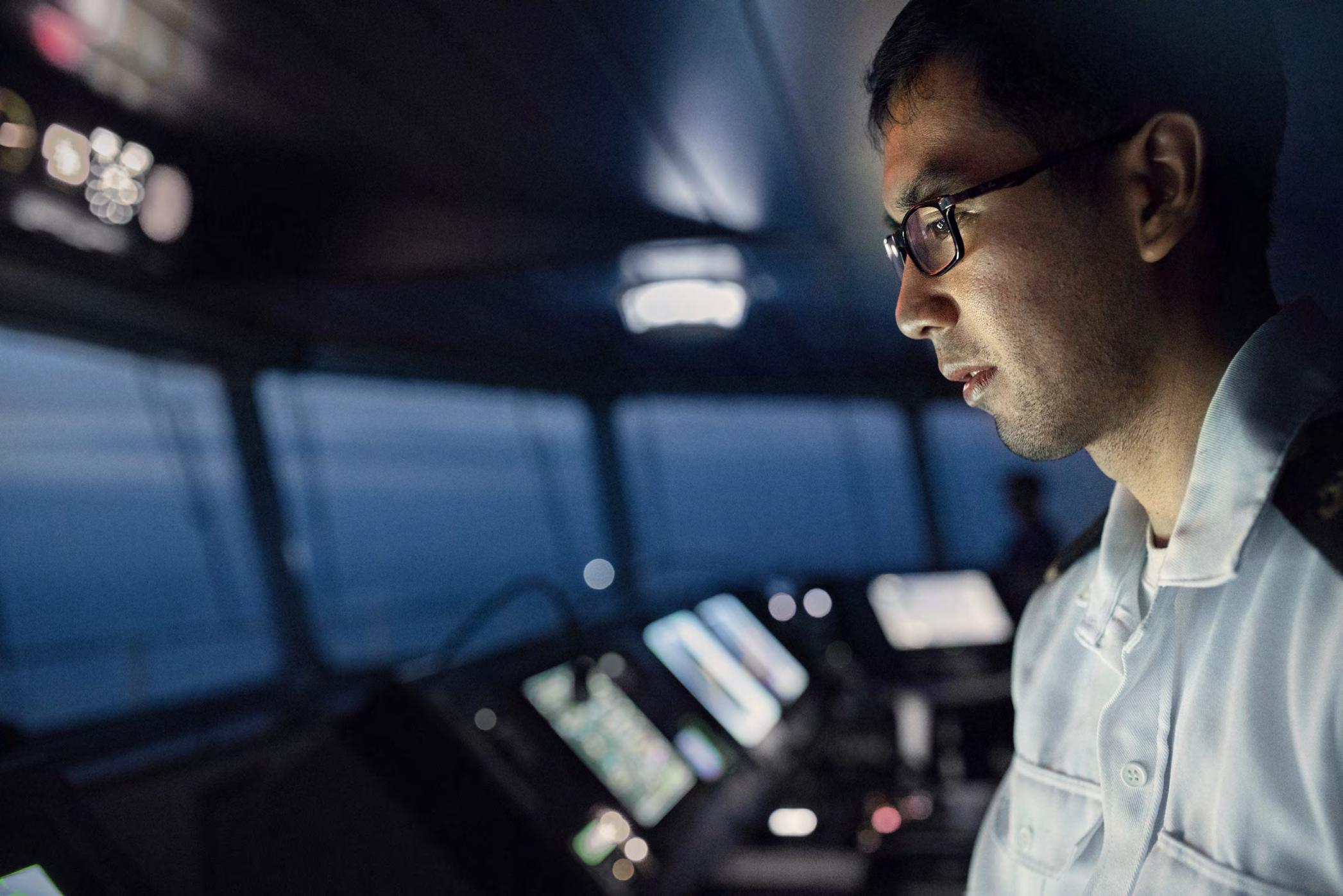


Seafarers keep world trade moving, yet their voices rarely reach the boardroom. Now, a new generation of shipping leaders is trying to close that gap grounding corporate strategy in life at sea
For decades, seafarers have powered shipping’s profits but remained largely invisible to its decisionmakers. That distance — between the bridge and the boardroom — is finally narrowing. Across the industry, companies are discovering that smart strategy depends on hearing the people who live its consequences.
“Seafarers remain vital despite advances in ship automation,” says Horace Lo, group managing director of Modern Terminals, Hong Kong’s oldest container port operator. Quite so, agrees Rosita Lau, a partner at Ince & Co Hong Kong, who suggests seafarer representatives should be invited to sit in board meetings to voice seafarer views and wishes.
At Eastern Pacific Shipping, one of the world’s largest shipowners, the crew’s voice is now built into how the company operates. CEO Cyril Ducau calls it “a
matter of alignment,” with policies tested against the daily realities of ship life. The firm’s Life@EPS survey captures crew sentiment on everything from wellness to workload, helping headquarters match policy with practice.
It’s a shift mirrored across many other companies interviewed for this magazine. Wilhelmsen Ship Management has begun tracking how board decisions affect wellbeing and safety, while others — like MF Shipping Group from the Netherlands— have turned regular ship visits and open forums into part of management routine. MF’s Karin Orsel calls it “basic seamanship in corporate form — listen before acting.”
For Bernhard Schulte Shipmanagement (BSM), that listening now happens on a large scale. Dozens of seafarers attend HR marine meetings to feed back on new policies, says Eva Rodriguez, the manager’s crewing head, who wants their input heard “not as an afterthought but as a foundation.”
The message echoes from crewing
hubs worldwide: it’s no longer enough to claim people are our greatest asset. They must be part of the process.
At Wallem Group in Hong Kong, CEO John Rowley has turned annual officers’ conferences into joint workshops with executives. “You get far better solutions when the people who’ll use them help design them,” he says. Others are experimenting with digital feedback loops, social intranets, and crew-to-CEO communication platforms. NSB Crewing Solutions’ Simon Frank describes it as “flattening the sea-to-shore hierarchy.”
What’s driving this push isn’t just ethics — it’s performance. Companies are recognising that welfare, retention, and safety are strategic levers, not line items. “Crew welfare is an investment,” says Oren Saar, the head of agritech firm Agwa. “It strengthens retention, ESG performance, and operational stability.”
That connection between wellbeing and


You can’t steer what you can’t

efficiency is now data-backed. Reports from various crew welfare indices show direct links between morale and measurable operational outcomes — from reduced incident rates to better fuel efficiency. The logic is hard to ignore: engaged, respected crews perform better.
Technology has become a new ally in this shift. Digital platforms now give crews anonymous ways to share feedback directly with management, bypassing the old chain of command that often filtered or softened messages. Companies like Columbia Group and BSM have rolled out apps that log onboard conditions, training needs, and even emotional wellbeing indicators.
As Simona Toma of Columbia puts it, “You can’t improve what you can’t see. For years, we’ve had perfect visibility on the hull condition — now we’re finally getting visibility on the human condition.”
The growing interest in direct engagement has inspired fresh ideas. Noatun Maritime’s Carl Martin Faannessen
argues from Manila that every major owner should have a seafarer on its board. “If not,” he says, “send the board to sea once a year.” Steven Jones, founder of the Seafarers Happiness Index, adds that sentiment data should sit beside financial metrics: “You can’t steer what you can’t measure,” he tells Splash.
Some operators have already embedded that culture. At Fleet Management, more than two-thirds of directors are former seafarers. “It changes every discussion,” notes CEO Rajalingam Subramaniam. “You don’t talk about crew — you talk about colleagues.”
That shared language is key. Too often, says recruiter Ryan Kumar, maritime decisions are made by people “who’ve never heard what fatigue sounds like on a night watch.” The remedy, he argues, is humility.
That humility also extends to how training
and feedback are interpreted. Companies like Anglo-Eastern and Wilhelmsen have introduced so-called crew councils — groups of officers and ratings who meet quarterly to critique company policies and identify improvement areas. Their feedback shapes safety campaigns, mental health initiatives, and training updates.
“It’s messy, and that’s the point,” says one crewing executive. “You want friction — that’s how you get realism.”
The renewed attention on seafarer voice has coincided with generational change in leadership. A growing number of senior executives — from Fleet’s Rajalingam to Synergy’s Rajesh Unni — come from the bridge themselves, bringing first-hand empathy to board discussions. “The boardroom used to talk about ships as if they were spreadsheets,” says one former captain now in corporate management. “Now you’ll hear the word ‘crew’ before you hear ‘asset.’ That’s progress.”
Charities now frame welfare as strategy. “Safety, morale, and profitability are


Spanning 5 continents, we bring on-the-ground insight into diverse markets and cultures, ensuring seamless operations tailored to your business, wherever you do business.



not separate issues,” says Mission to Seafarers’ head Peter Rouch. “They’re the same conversation.”
Still, the movement is uneven. Many operators, particularly smaller ones, remain focused purely on compliance. “Some companies view crew engagement as something nice to have — not something necessary for business resilience,” says Chirag Bhari from the charity ISWAN. “That mindset has to shift.”
The pandemic accelerated the conversation. During covid, when thousands of seafarers were trapped onboard for months, many executives experienced a reckoning. “That was the moment when people realised the industry runs on human endurance,” says BSM’s Rodriguez. “It changed how we think about leadership.”
Technology, again, is helping sustain that awareness. Gamified wellbeing
modules, digital forums, and onboard surveys now reach crews at scale — though as Jones from the happiness index warns, “tech isn’t empathy.” It can amplify voices but not replace genuine connection.
Companies that combine both approaches are seeing tangible benefits. One shipmanager shared internal figures showing retention rising 8% after introducing structured listening programmes — simple but regular conversations between superintendents and crews focused on what could be improved onboard. “It’s astonishing how far a phone call can go when it comes from someone who actually listens,” says the firm’s HR head.
There’s also growing recognition that the bridge-to-boardroom gap isn’t just vertical — it’s cultural. With multinational crews and managers often divided by geography
and language, feedback can easily be lost in translation. “Cross-cultural understanding is part of safety,” notes Noatun’s Faannessen. “When we don’t speak the same professional language, we make mistakes.”
Progress, however, doesn’t just mean adding channels — it means changing attitudes. Several shipowners now treat seafarer feedback as part of ESG reporting, tying it to corporate sustainability metrics. “You can’t talk about social governance without including the people who live your operations,” says one major European tanker executive.
The consensus forming across some of the sector — though not all — is simple but overdue: strategy ashore only works when it reflects life at sea. Whether through formal feedback, board participation, or just more time spent onboard, the best companies are rediscovering an old truth — that the clearest course is plotted when the view from the bridge reaches the boardroom.



As the next generation turns away from life at sea, industry leaders reflect on what it would take to make seafaring something parents once again want for their children
Ask anyone who’s spent time at sea and they’ll tell you: shipping isn’t just a job, it’s a calling. But somewhere between the automation drive, the endless compliance paperwork, and the isolation of the pandemic years, that calling has grown faint.
Across the industry, there’s a quiet admission — if you wouldn’t want your own son or daughter to join a ship, what does that say about the state of the profession? Many of us have been at shipping conferences where no hands are raised when a moderator asks if you’d be happy seeing your offspring head out for a career at sea.
For many, it’s a matter of lost allure. “We’ve made shipping efficient,” one senior manager remarks, “but we’ve stripped away its sense of adventure.” The digital bridge and satellite link have brought connectivity but not connection. Seafaring today is safer, cleaner, and smarter than ever — yet it can feel lonelier.
Karin Orsel of MF Shipping Group from the Netherlands believes the heart of the issue lies in recognition. “We have to show that being a seafarer is not a fallback career,” she argues. “It’s a profession that demands skill, resilience, and intellect.” Her company now promotes mentorship and visible career paths from cadet to captain — and beyond, to roles ashore.
Others are blunter. “The problem isn’t the sea,” says recruitment expert Ryan Kumar. “It’s the story we tell about it.” He points out that shipping’s public image hasn’t kept pace with its technology. “You
can talk about AI, green fuels, and digital twins all you like — but until parents think of a ship as a place of opportunity, not hardship, we’re fighting a losing battle.”
For V.Group’s chief operating officer Allan Falkenberg, the industry’s own fragmentation is part of the problem. “We need to rebuild the professional trust and respect that make crews function as cohesive units,” he says. “You can’t attract talent to a profession that doesn’t seem to respect itself.”
That respect begins onboard. Better connectivity, proper rest, fair rotation, and decent cabins should not be seen as luxuries. As one shipmanager puts it, “We used to say, ‘It’s not a cruise ship.’ Maybe it’s time we stopped saying that.”
The generational shift is already under way. Younger recruits see seafaring as one stop in a broader career, not a lifelong commitment. As Eastern Pacific Shipping’s CEO Cyril Ducau notes, “We have to build bridges between sea and shore, so that people move fluidly between them. That’s how you retain talent — by giving them a future.”
Yet many warn that the industry has become overly reliant on short-term fixes. “You can’t keep promising training and welfare programmes if they only exist in PowerPoint,” says one crewing director. “Young people spot inauthenticity a mile off.”
Bernhard Schulte Shipmanagement’s Eva Rodriguez frames it more constructively: “The next generation wants purpose,” she says. “We can offer that — moving the world’s goods safely, sustainably, and together. But we have to

tell that story better.”
There are, however, glimmers of renewal. Initiatives pairing cadets with mentors, virtual-reality training tools, and the rise of fleet-wide wellbeing programmes show a sector learning, slowly, to value its people again. The Mission to Seafarers’ Peter Rouch sees hope in that shift. “We’re rediscovering that welfare isn’t charity,” he says. “It’s strategy.”
Still, the question remains uncomfortably personal. Would you want your own child to go to sea? For many senior executives, the answer comes after a pause. Some say yes — with caveats. Others admit they would hesitate. But all agree that the industry must reach a point where that hesitation disappears.
Because if shipping can’t inspire its own families, it won’t inspire the next generation either.
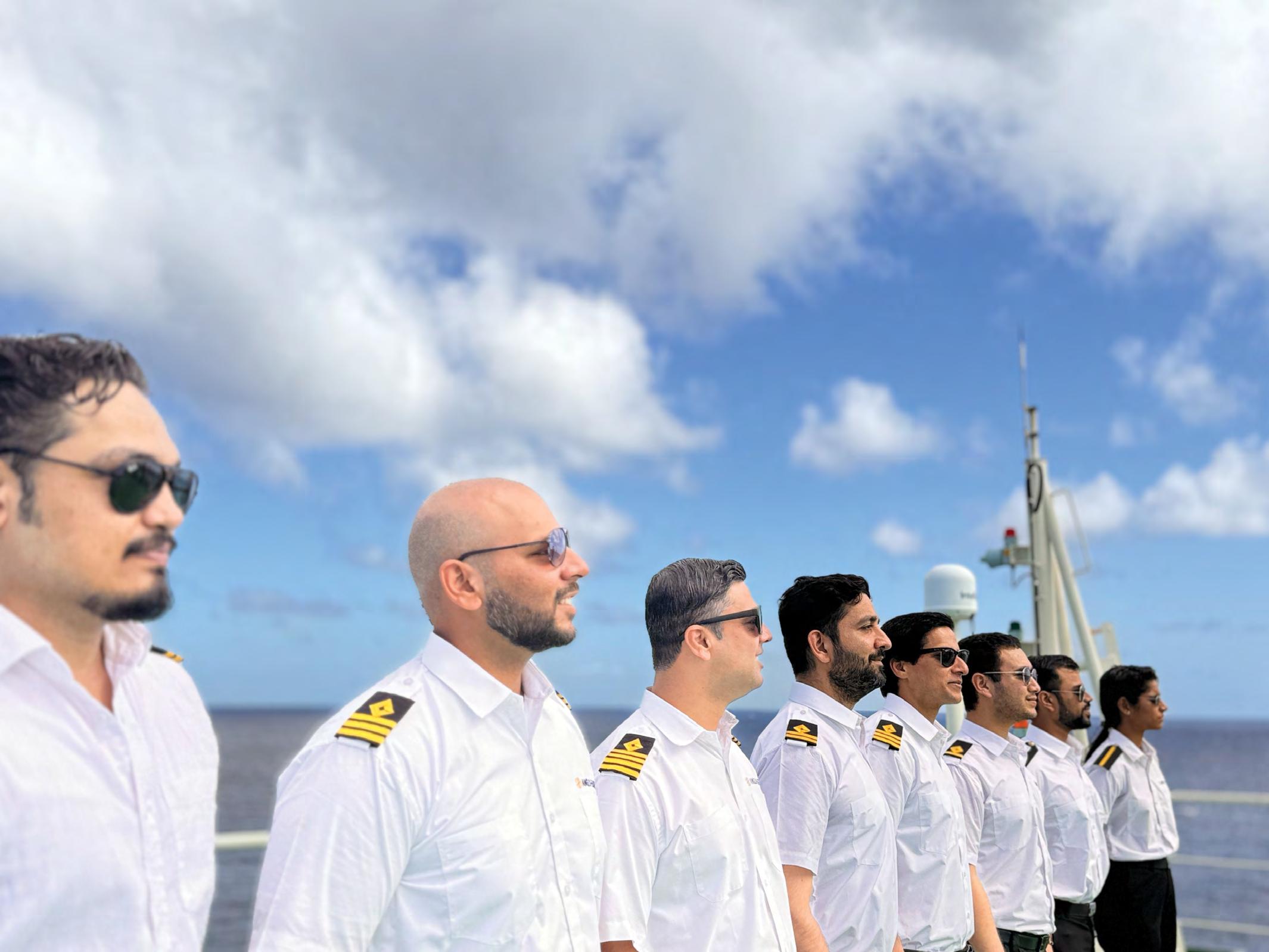


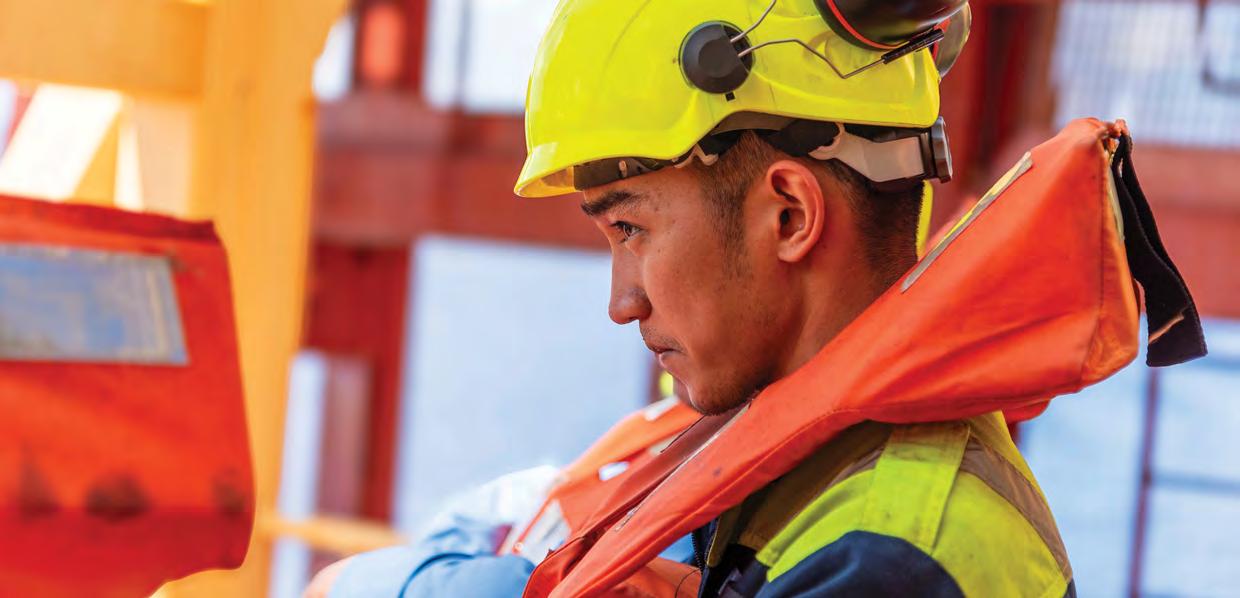
Shipping’s training ecosystem is struggling to stay relevant in an era of accelerating change, with industry leaders warning that tick-box learning and operational pressures are undermining seafarer competence
Maritime training is under strain. Between relentless schedules, shrinking manning levels, and an accelerating pace of technological change, the old ways of teaching seafarers are creaking. The industry knows it must do better — but few agree on how. Across interviews with senior leaders, a consensus emerges: training is too compliance-driven, too disconnected from daily reality, and far too time-hungry for the modern shipboard environment. From gamification and microlearning to AI-driven personalisation, shipping is beginning to explore how to make training stick — but time, not technology, remains its greatest constraint.
The time trap
“Seafarers are under intense operational pressure,” says Steven Jones, founder of the Seafarers Happiness Index. “When
crews are stretched thin just managing daily operations, even well-designed training programs struggle to gain traction.”
It’s a sentiment echoed across the industry. Pradeep Chawla, CEO of MarinePALS, notes that the average ship’s planned maintenance system has around 3,000 individual tasks. “If a proper study were done, we’d find it’s not humanly possible to complete them all,” he says. “When you add bad weather, port calls, and administrative work, there’s simply no time left for learning.”
The result, says Chawla, is a “tick-box attitude” to both work and training — not because seafarers are complacent, but because they are overwhelmed.
Across shipping, a new wave of training
reformers is asking whether maritime learning should look more like mobile gaming than classroom study. Lars Gruenitz of Norstar Ship Management believes interactive and gamified learning can make training far more impactful — especially when seafarers can learn “at their own pace, wherever they are, whether at a training centre, onboard, or at home.”
For Wiebke Schuett at Wilhelmsen Ship Management, the answer lies in microlearning — short, targeted modules designed for attention spans measured in minutes, not hours. “We incorporate gamification and interactive elements to make learning engaging and memorable,” she says. “The goal is stickiness — ensuring seafarers actually retain and apply what they learn.”
Gamification, AI-driven personalisation, and scenario-based training are reshaping the learning





landscape. Angad Banga of Caravel Group says training must evolve faster: “The industry is changing rapidly, and training needs to capture that momentum. We’re focusing on immersive, simulation-based programs that align with how people learn today — creating learning that sticks, not ticking boxes.”
That phrase — tick-box — has become the defining critique of maritime training. Henrik Jensen of Danica Crewing Specialists argues that statutory training under the STCW framework is “not in sync with what is actually needed.” The international standards may provide a baseline, but “they evolve far too slowly for a fast-developing industry.”
Simon Frank of NSB Crewing Solutions agrees that “training methods
are not modernised fast enough” and remain “driven too much by compliance compared to actual improvement needs.”
This compliance culture, says Jones, creates “a cycle where training is viewed as a burden rather than a valuable investment.” He warns that “even excellent training faces an uphill battle” unless the industry first tackles manning levels, fatigue, and honest reporting of working hours. “Without adequate time for genuine training, all other improvements become meaningless.”
For Carl Martin Faannessen, CEO of Noatun Maritime, training is “a schizophrenic environment” split between regulatory mandates and operational needs. He advocates for “blended learning” — combining digital modules with structured onboard engagement.
“Senior officers should be mandated to engage with their crew at least once a day for training purposes,” he says.
This idea of integrating learning into daily work resonates with Eva Rodriguez at Bernhard Schulte Shipmanagement. BSM is rolling out modular and justin-time training, “allowing seafarers to choose when to complete sessions within a set timeframe,” she says. “Personalised learning optimises limited time and addresses individual needs.”
At Columbia Group, Simona Toma is promoting flexibility too: “Training today must be flexible and practical. We blend LMS modules, microlearning, simulations, and hands-on practice — even exploring virtual reality — to make learning more engaging and effective.”
Many industry voices argue that the































































content of training, not just its delivery, needs radical overhaul. Vinay Gupta of Union Marine Management Services believes training “struggles to keep pace” with fast-evolving technology. “Institutes hesitate to invest, unsure how quickly today’s systems may become obsolete,” he warns, leading to “a widening gap between technological progress and preparation.”
That same gap is evident in digital skills and data literacy. Captain Rajalingam Subramaniam, the CEO of Fleet Management, says the priority is “bridging traditional seafaring with digital competency. We need seafarers who are equally confident with a sextant and a screen.”
John Rowley , CEO of Wallem Group, adds that gamification will help engage seafarers, but “we also need effective train-the-trainer programs” to ensure
those teaching the next generation are equally modern in approach.
Several executives see a deeper, cultural problem. Jones argues that the decline of “professional trust and respect” onboard is undermining training outcomes. “We need to rebuild crews as cohesive units rather than collections of individuals monitoring screens,” he says.
Faannessen takes this further, calling for stronger cross-cultural leadership. “A lack of self-awareness and cultural understanding drives misunderstandings and conflict,” he says. “The soft stuff is the hard stuff.”
That focus on human factors echoes through many responses. Captain Rajiv Singhal of MTM says training “must evolve from compliance-driven modules to curiosity-driven learning. Training must go beyond certificates; it must build confidence.”
Ultimately, training cannot be static. “No training ecosystem can ever be perfect,” says Singhal. “It is a living process that must continuously evolve with technology, operations, and human needs.”
For Aalok Sharma of Anglo-Eastern, this evolution requires “modern training facilities, immersive technologies, and updated curricula” aligned with realworld scenarios.
And yet, as Jones reminds the industry, technology alone will not fix a broken system. “Until we address the honesty and accuracy of working hour reporting, and right-size manning levels,” he says, “we cannot create the conditions necessary for effective learning.”
The challenge, then, is not just to make training smarter, but to make it possible.




As shipping digitalises and decarbonises, training is failing to keep pace. From soft skills and safety to new fuels and fraud, Splash identifies the gaps in today’s training environment
For all the talk of transformation, maritime training is falling behind.
While simulators, gamified courses, and online academies multiply, the fundamentals remain out of sync with modern shipping. Across the industry, executives see an urgent need to modernise not only what seafarers learn, but how — and who delivers it.
“The biggest gap is that training methods are not modernised fast enough,” says Simon Frank of NSB Crewing. Pradeep Chawla from MarinePALS points to chronic underinvestment: “Most companies spend less than 1% of operating costs on training — less than a quarter of what other high-risk industries spend.”
Teaching, he adds, “is the lowest-paid shore job in the industry. Smart young
people will not take it up as a career.”
Many leading shipmanagers polled for this magazine agree that the biggest gap lies in digital competence, followed by new fuel expertise. “We need seafarers who can handle both a sextant and a screen,” Fleet Management’s CEO Captain Rajalingam Subramaniam tells Splash.
As ships adopt alternative fuels and smarter systems, Allan Falkenberg, chief operating officer at V.Group, warns that “each fuel has its own safety considerations — from ammonia’s toxicity to methanol’s flammability. Using them as marine fuel demands a new level of expertise.”
Robert Gaina of Ardmore Shipping and
Marlon Roño of Magsaysay both highlight the widening gap between training content and the skills needed for decarbonisation. “Crew must be properly trained and confident in the safe handling of lowcarbon fuels,” says Gaina.
Roño adds that training “has not kept pace with automation, digitalisation, and new shipboard systems.” He calls for more simulation-based and scenario-driven learning.
Anglo-Eastern’s Aalok Sharma tells Splash that “significant gaps remain — not only in digital skills and human factors but in the relevance and delivery of training content.”
“Seafarers want training grounded in reality — hands-on, practical, and scenario-based,” argues Peter Rouch, who heads up the Mission to Seafarers.


For more information on how V.Group can support your crew, visit
We offer seafarers and their families more than just a job, they are choosing to invest in a life-long career with V. www.v.group

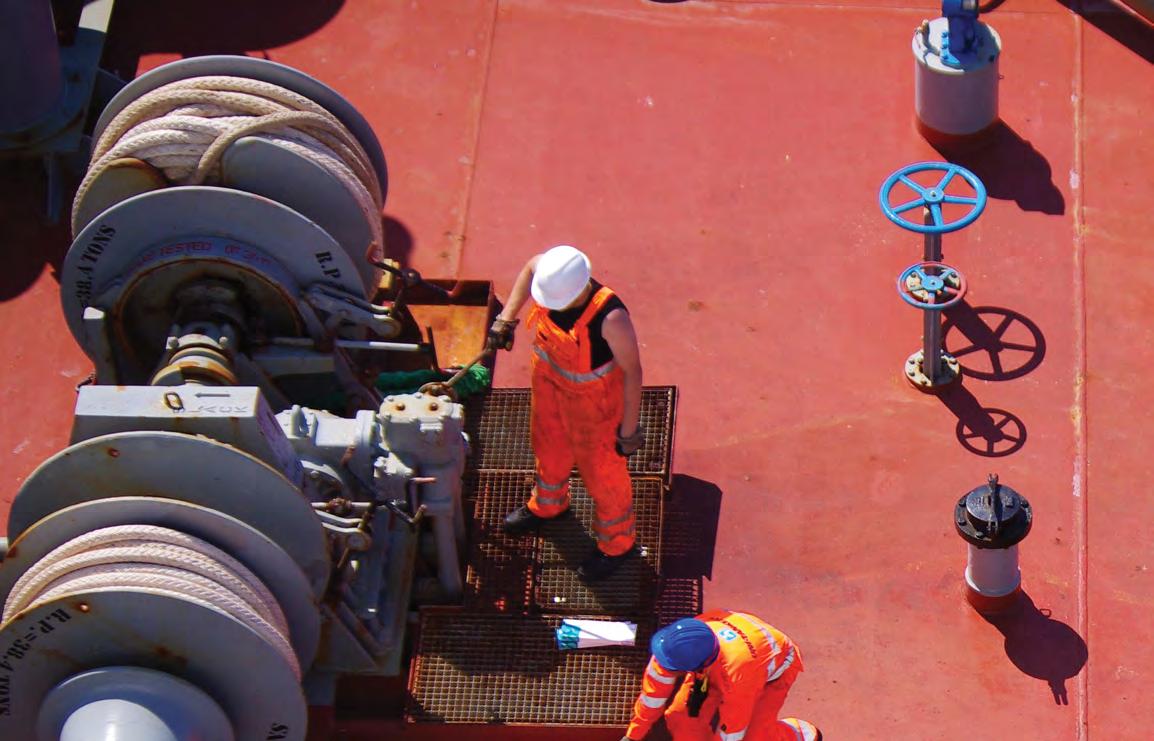
Carl Martin Faannessen from Manilabased Noatun Maritime points to “crosscultural leadership” as the industry’s blind spot. “Soft skills are the hard stuff,” he says — a view shared by Karin Orsel of MF Shipping, who lists “teamwork, communication, and decision-making” among the most neglected areas.
MTM’s Captain Rajiv Singhal calls this the human element: empathy under stress, decisiveness under pressure. “These qualities form the invisible backbone of safe operations,” he says.
For Manpreet Gandhi at Ishima, fraudulent certification remains a persistent threat. “Quality across
We need seafarers who can handle both a sextant and a screen
institutions is inconsistent,” he warns. “We need stricter oversight, greater transparency, and uniform global standards to ensure genuine competence.”
Vinay Gupta from Singapore’s Union Marine Management Services agrees that too many training institutions “operate in isolation from real-world shipping, run by people who see teaching as a retirement plan rather than a responsibility.”
Chirag Bhari from the shipping charity ISWAN introduces another modern problem: training fatigue. Seafarers are bombarded with e-learning but
deprived of time and context to absorb it. “As technology advances, there must be a balance between humancentred approaches and technical skill development,” he says.
Simona Toma of Columbia points to the same challenge. “Many pause professional development during leave, creating knowledge gaps once back onboard,” she notes. “Continuous learning must be part of the culture, not an occasional exercise.”
The future of training, then, is not just about technology. It is about culture, competence, and commitment — ensuring seafarers are equipped not just to comply, but to lead.

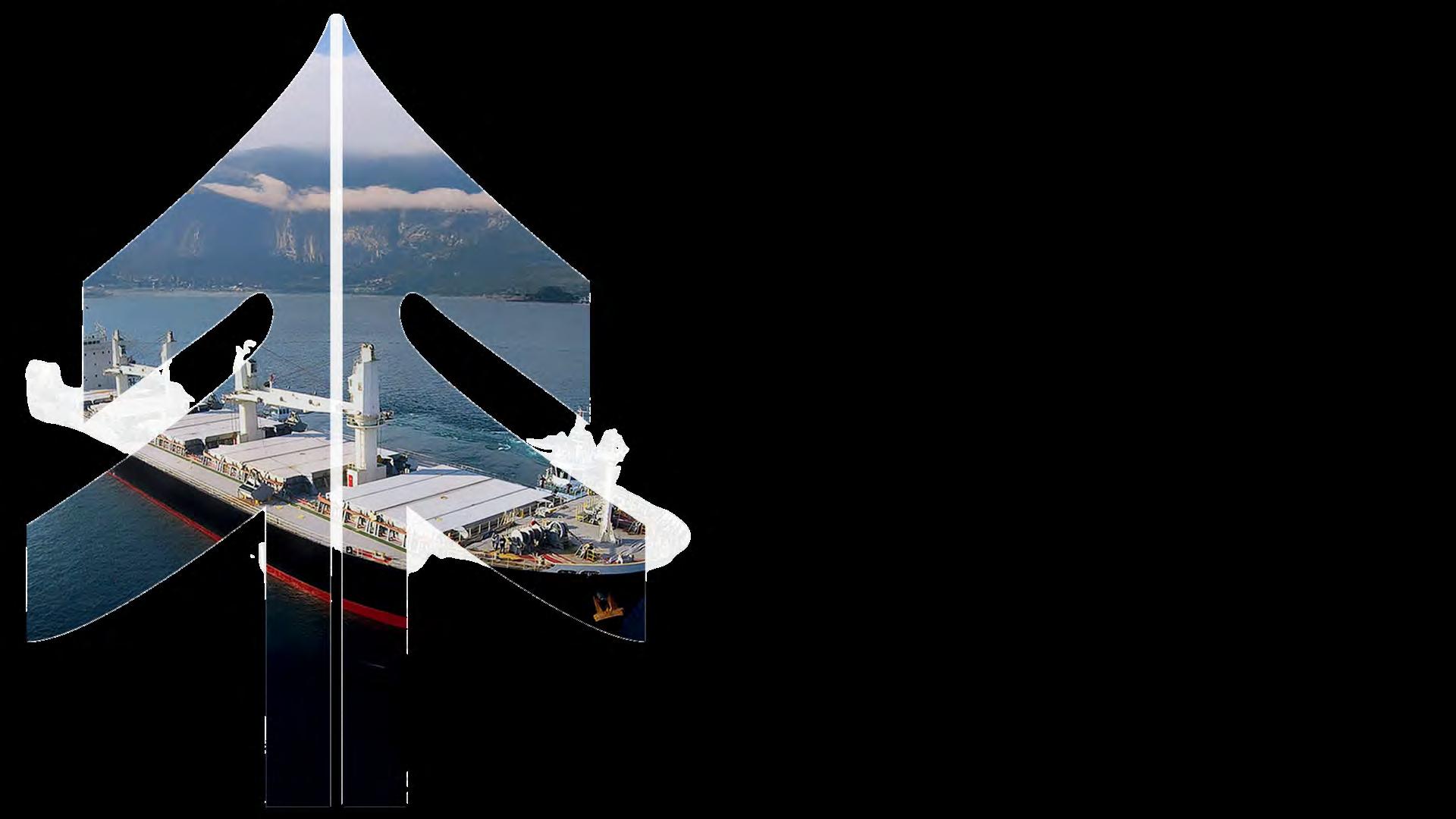

Shipping’s human capital crunch is fast becoming one of its defining challenges of the decade
From Singapore to Copenhagen, shipowners and managers are grappling with a shrinking supply of qualified crew just as fleets grow larger, more complex, and more technologically advanced. The numbers are sobering: the International Chamber of Shipping forecasts a shortfall of nearly 90,000 officers by 2026, a figure that echoes across boardrooms and crewing desks alike.
Yet, amid warnings of a tightening labour pool, there is also renewal. Companies are rethinking how and where they recruit, expanding beyond traditional strongholds and investing in training and wellbeing with a sense of urgency not seen in a generation.
As Cyril Ducau, CEO of Eastern Pacific Shipping (EPS), one of the world’s largest shipowners, puts it: “The key for us today is balancing technological evolution with skills readiness. As vessels become more advanced with dual-fuel engines, digital platforms, and AI-assisted systems, the industry needs seafarers who are able to adapt quickly to new training and technologies.”
EPS is in the middle of one of the industry’s fastest fleet expansions, with plans to lift its seafarer headcount to over
10,000. Its Life-at-Sea programme—built around retention, wellbeing, and skills— has already become a benchmark. “The investments we’ve made are bearing fruit,” Ducau says. “Our retention rates are high, and EPS has earned a reputation as a quality employer.”
EPS is also spreading its geographical net. The company will open its own manning office in Manila in 2026, followed by another in China in 2027. “Coupled with our existing offices, this will allow us to cover most hiring centres with our own resources and better access to talents,” Ducau explains. The company is also strengthening cadetship pipelines and cross-training to future-proof its talent pool.
For many, the deeper problem lies not in the number of potential recruits, but in aligning their expectations with the realities of life at sea.

Wellington Koo, executive director of Valles Steamship, captures it bluntly: “The present young generation is a fast food generation. They would like to see results within a short period of time, but the maritime industry requires patience—and
there is no fast track for knowledge or experience.”
He adds that the pandemic was a turning point. “Seafarers might now opt for shore jobs to stay closer to family and friends,” Koo says. That sentiment— valuing stability and proximity over adventure—is reshaping how companies recruit and retain.
For large managers like Fleet Management, part of the Caravel Group, scale and consistency are the key.
“The biggest challenge is attracting and retaining people to a long-term career in shipping,” says group COO Angad Banga. “We’re competing not only with other maritime companies but also with technology and finance sectors that offer more predictable lifestyles.”
To bridge that gap, Fleet has doubled down on training. The group recently acquired the International Maritime Institute in Greater Noida, one of India’s leading maritime academies, ensuring control over both pre-sea and post-sea education. “Our focus isn’t just to expand the pool but to ensure each new recruit is












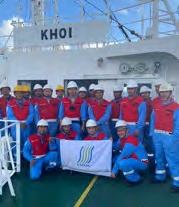


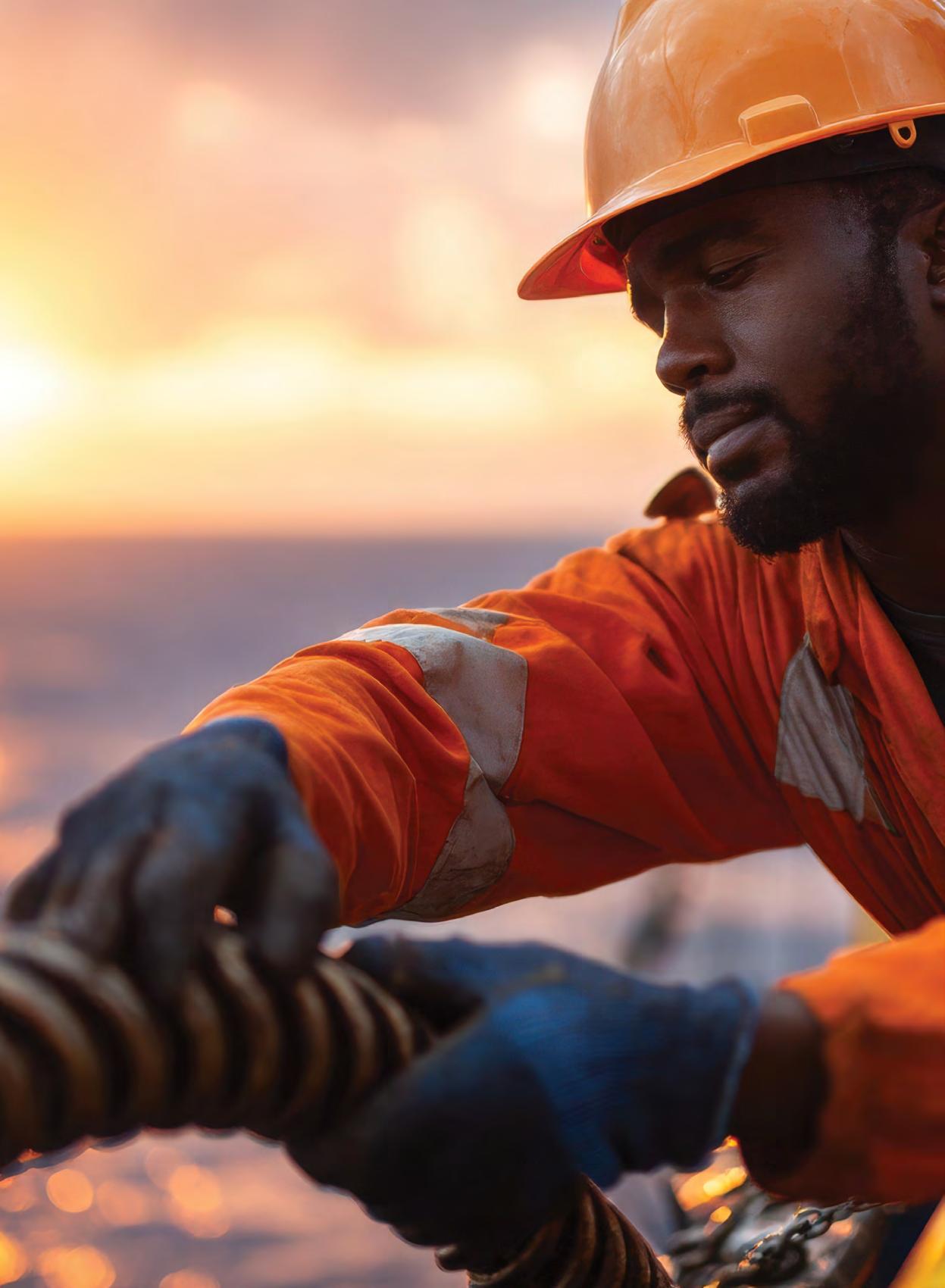
supported by strong, consistent training standards and career pathways,” Banga says.
Fleet Management’s core hubs remain India, the Philippines, and China, but Manila is now taking on expanded importance. “We have made a significant investment there, expanding our footprint, support services, and installing highspecification simulators,” Banga notes.
Across the sector, a consistent theme emerges: the shortfall of senior officers, especially chief engineers and masters.
“The industry is facing a growing global shortfall of certified officers, particularly in senior ranks,” warns Wiebke Schuett, vice president for marine personnel at Wilhelmsen Ship Management. “Many experienced seafarers are choosing to transition to shore-based positions after only three to five years in senior roles, creating a gap in leadership at sea.”
For Schuett, the issue is not just technical. “Beyond competence, finding seafarers with the right mindset, soft skills, and integrity is an increasing challenge,” she says. Wilhelmsen addresses this through recruitment and promotion screening that includes psychometric assessments of leadership and communication style.
The company has also started recruiting in Kenya. “Our goal is to develop Kenya into a sustainable and stable crew source,” Schuett says, “supporting our strategy to diversify and strengthen our global talent pool.”
Few regions are drawing as much attention as Africa.
Bernhard Schulte Shipmanagement (BSM), one of the world’s biggest crew
employers, sees vast untapped potential. “Africa currently accounts for only around 3% of the world’s seafarers,” notes Eva Rodriguez, director of HR marine at BSM. “Yet the continent has a coastline of over 30,000 km.”
BSM this year opened its first Maritime Training Centre in Ghana, underlining its belief that Africa can become a major source of maritime labour. The company has been active in the region for more than a decade. “We have ambitious plans to expand our African seafarer pool in collaboration with shipowner customers,” Rodriguez says.
BSM’s crew pool now spans more than 95 nationalities, giving it a flexibility that proved crucial during pandemic disruptions. “By tapping into a global talent pool rather than relying on one or two nationalities, it’s possible to respond flexibly to fluctuations in specific markets,” Rodriguez explains.
Beyond Africa, the company is expanding its BSM Smart Academy network, partnering with maritime universities in Egypt, Oman, Saudi Arabia, Georgia, and Turkey—none traditional seafarer nations, but all keen to grow. South America, particularly Mexico, Venezuela, and Peru, is also on BSM’s radar.
For Karin Orsel, CEO of MF Shipping Group, diversity is not a slogan but a necessity. “We face a global shortage of qualified officers and crew, especially those who combine technical expertise with strong non-technical skills such as problem-solving and communication,” she says.
Orsel argues that gender balance remains one of the industry’s biggest blind spots. “I strongly believe in the value of diverse teams—across nationality, age, and gender—but attracting and retaining
women remains a particular challenge.”
MF Shipping is exploring new partnerships in Africa and Eastern Europe, but Orsel stresses that quality must outweigh quantity. “Our focus remains on matching the right skills and cultural fit, and on long-term development rather than simply increasing numbers.”
For John Rowley, CEO of Wallem Group, the problem is compounded by geopolitics. “Global political events are having adverse effects, acting as one of the reasons for the shortage of qualified seafarers,” he says. “Conflicts like the war in Ukraine and attacks in the Red Sea make seafaring less attractive due to increased risks.”
To offset this, Wallem is exploring new sourcing regions in Africa, Eastern Europe, and Indonesia. “These regions show good potential for long-term sustainable recruitment,” Rowley says.
Across Southeast Asia, expansion is accelerating. Manila’s Magsaysay People Resources Corporation, led by president Marlon Roño, is broadening its search to Indonesia, Vietnam, Myanmar, India, Ukraine, Russia, and Ethiopia.
At Dockendale, CEO Vikrant Gusain confirms pilot projects in South Africa and expansion across India, with studies underway into “a few island nations in Southeast Asia” for future development.
Meanwhile, Columbia Group has added offices in Indonesia and Vietnam and built partnerships with agencies in Myanmar and the UAE. “Our strategy is to diversify the sourcing base and ensure flexibility in meeting client needs,” explains Simona Toma, Columbia’s chief of maritime HR. Danica Crewing Specialists CEO Henrik Jensen also reports new ventures


in Turkey, Indonesia, and Kenya, while Faststream Recruitment’s Laura Humby highlights fresh crew placements from Peru, Egypt, and Sri Lanka—evidence that the sourcing map is widening faster than ever.
Some executives are especially bullish on Africa’s long-term prospects.
“We are big believers in Africa as the next source of seafarers,” says Carl Martin Faannessen, CEO of Noatun Maritime. “We’ve placed our bets in Kenya and South Africa for now. Neither is for the faint-hearted, but we believe in the potential.”
He cites a striking statistic: “In Kenya, fully 60% of the students pursuing a maritime education are female. And yet we hear of owners who insist they can’t find qualified female cadets!”
For some observers, the problem is less about geography than mindset.
“It’s not required to keep looking for the Lost Tribe to find the cheapest crew,” argues Pradeep Chawla, CEO of MarinePALS. “All nationalities can provide seafarers if the wages and conditions are sufficient for the living standards in that country.”
Others emphasise the need for ownership and development rather than outsourcing. “If a company is looking too eagerly for already qualified seafarers, as opposed to creating its own, there will always be problems,” says Steven Jones, founder of the Seafarers Happiness Index.
Jones points to the difficulty of gaining seat time as a growing barrier for cadets. “If we have ships with too few berths or too few companies willing to give them a chance, that has to be the challenge, which
has to be overcome.”
He also notes emerging recruitment in Thailand and Indonesia, as well as moves into northern India. But he warns against exploitative practices in developing markets. “I’ve heard of seafarers from Nigeria being brought into the industry with promises of careers, but then when they try to get seat time, this seems impossible. That’s not good enough,” he says.
According to Ronald Spithout, managing director of OneHealth by VIKAND, the shortage of senior officers is just one symptom of a deeper shift. “The talent acquisition dynamic has completely reversed—from ‘what can a crewmember offer us?’ to ‘what can we offer crewmembers?’” he says.
Spithout notes that vessels now host four generations at once, each with different needs and expectations. “What were once considered perks—such as comprehensive healthcare and wellbeing programmes—will soon become baseline requirements,” he warns.
“Companies that recognise this shift and invest in comprehensive crew support will have a significant advantage in attracting and retaining the talent needed to navigate both the technical challenges of decarbonisation and the operational demands of modern trade.”
Recruitment specialists see the same pressures from a different angle. “It’s not a shortage of people—it’s a shortage of readiness,” says Ryan Kumar of Direct Search Global.
“Younger officers have certificates, but not always confidence,” Kumar says.
“Simulation can’t replace sea sense, and that’s something you only build through mentorship.”
He also highlights a growing “expectation gap.” “Many new entrants view seafaring as a stepping stone rather than a profession,” he says. “They see shore-based roles, digital jobs, and work-life balance as the end goal. Retention suffers when the sea is seen as temporary.”
Kumar believes the next wave of talent will come from “where it’s changing, not where it’s cheapest.” He points to Ghana, Nigeria, Sri Lanka, and Indonesia as rising sources of maritime labour—markets with young populations, improving English proficiency, and “genuine aspiration to join global trade—if given the right pathway.”
“The smartest companies won’t chase supply,” he concludes. “They’ll create it.”
For companies like Ardmore Shipping, that creation begins early.
“We want to attract the brightest and the best,” says Robert Gaina, senior vice president, commercial. Ardmore’s Bursary Cadet Program, launched in 2021, helps overcome the financial barriers that often block promising young people from maritime careers. “So far, we’ve awarded 12 bursaries, including four female cadets,” he notes.
But Gaina also points to a hard truth: “Crewing standards and conditions vary a great deal across the industry. Employers that invest in training, high-quality living and working conditions, and clear career ladders will see the results.”
From Manila to Mombasa, one message resonates: the world’s future seafarers are already out there—but they must be inspired, trained, and treated as professionals, not placeholders.
PARTNER.SHIP. REDEFINED. marlow-navigation.com



Amid rising pay and shrinking shore leave, industry leaders tell Splash what it really takes to keep crews loyal
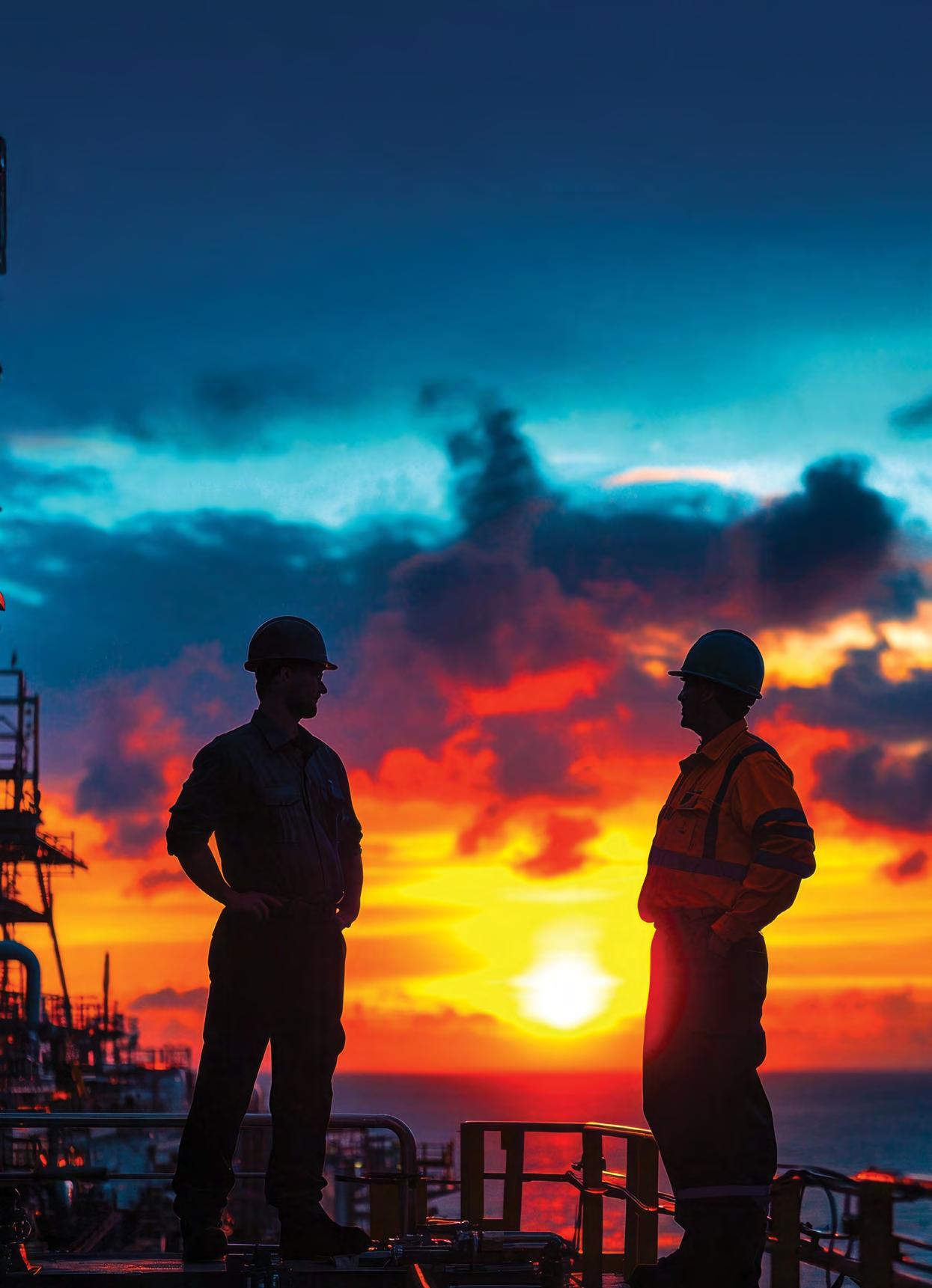


www.mctconsultancy.com

MCTC leads in global catering management and training—providing healthy, culturally diverse meals for vessels across the world.
Combining culinary expertise with seamless supply chain solutions, we deliver more than just nutrition.
Our inclusive recipes, health-first approach, culturally inspired dishes, and tailored support bring comfort, connection, and a true sense of home to every crew—no matter where they sail.
Because every seafarer deserves food that fuels body and soul.

Creating home at sea, one dish, one culture.

Retention has quietly become one of shipping’s biggest business headaches. Global pay packets may have risen across most ranks this year, but the data tells a starker story — only four in ten shipmanagers report any improvement in keeping crew. Wages are up, yet the exodus continues.
At the heart of the problem is a changing value equation. For a new generation of officers and ratings, loyalty no longer comes from a payslip — it comes from being seen, supported and connected.
“The salary and benefits of seafarers have been stagnant for the last two decades,” says Chirag Bhari from the charity ISWAN. “You rarely find people from big cities joining merchant shipping now — there are too many other options. But there’s still real passion among young people. We need to tap into that and give them opportunities.”
That optimism collides with tougher realities at sea. Tim Hill, CEO of Stella Maris, says the long shadow of covid-era practices remains. “Extended contracts, lack of shore leave and insufficient rest are still pressing issues,” he says. “As economies improve in traditional
You can’t expect 21st century talent to accept 20th century
seafaring nations, the financial appeal of working at sea will fade. Quality of life will matter more.”
Peter Rouch, secretary general of The Mission to Seafarers, has seen the same pattern. “Pay alone is far from the only factor,” he says. “Minimum crewing used as default, more admin, and the neardisappearance of shore leave — it’s a recipe for fatigue. Most seafarers I speak to say they joined for financial necessity, not pride. And many aspire to move ashore as soon as they can.”
The message is strikingly consistent. Money still matters — but it’s not the glue that keeps people at sea.
“Seafarers want conditions that demonstrate respect,” says Oren Saar, CEO of agri-tech firm Agwa. “Healthy food, reliable connectivity, fair time off. Without those, pay rises won’t retain talent.”
Marlon Roño at Magsaysay agrees flexibility now counts more than ever: “Young people want shorter contracts and competitive salaries. That combination is what will keep them interested.”
Even the basics, some argue, aren’t universal. “Fast crew internet still isn’t installed by some owners, even though it’s far cheaper now,” notes Lars Gruenitz of Norstar Ship Management.
For Captain Tanuj Balani of Stag Marine, the gap between expectation and reality is widening. “We can’t compete on wages alone,” he says. “We have to focus on career continuity, mental health, fair rotation and family inclusion.”
That sense of mismatch runs through the sector. Ryan Kumar of Singaporebased Direct Search Global puts it succinctly: “You can’t expect 21st century talent to accept 20th century conditions. Shipping is still built on a model from another era. Isolation, fatigue, months away from family — that’s a hard sell when other industries offer flexibility, wellness and clear growth paths.”
His verdict: “It’s not about hardship as a badge of honour. Resilience doesn’t mean neglect. The best companies will treat seafarers not as a cost centre but as their competitive edge.”

Aligned with the IMO's Hong Kong Convention
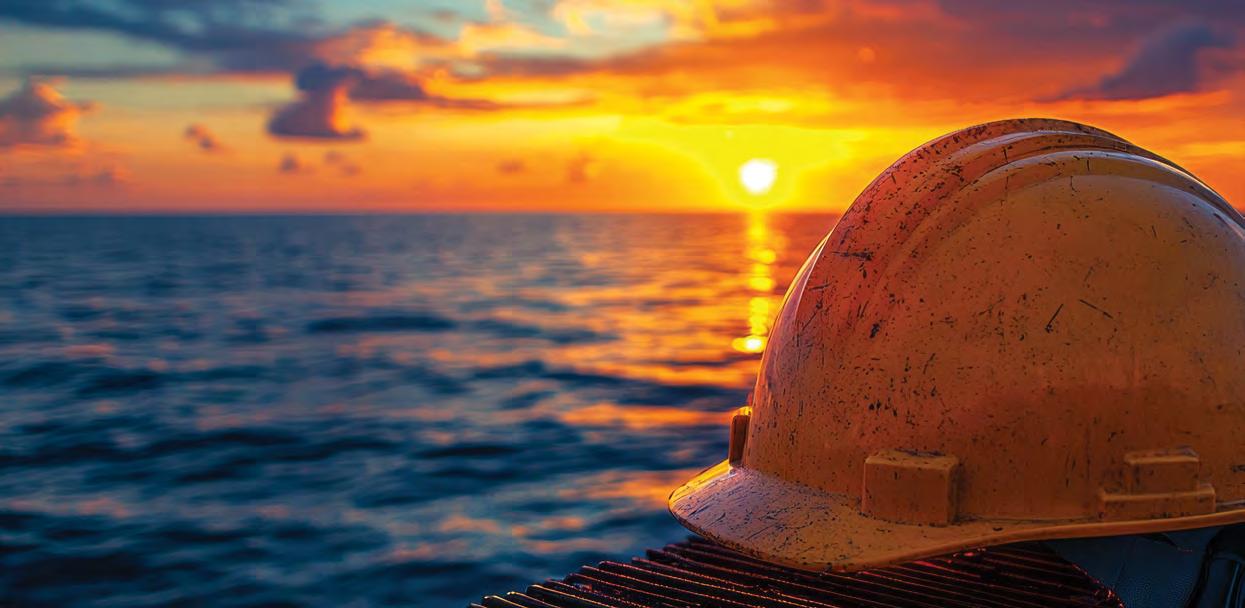
While cultural change is vital, practical fixes still count. Vikrant Gusain, CEO of shipmanager Dockendale, says retention is being undermined by “budget constraints from owners, excessive reporting and zero tolerance for error.” Add difficult port treatment, he says, and you have a recipe for frustration.
Allan Falkenberg, COO of V.Group, agrees the retention formula has shifted. “Market wages have risen and will keep rising,” he says, “but quality of life and a defined career pathway matter just as much. Competitive pay must sit alongside structured training, reliable leave and good benefits.”

At Ishima, part of d’Amico Group, Manpreet Gandhi argues that retention starts with fairness. “We expect shipowners we work with to provide competitive salaries and benefits, recognising the professionalism and responsibility of crews,” he says. “Officers are effectively the CEOs of their vessels, and ratings are highly skilled specialists. Not everyone in the industry treats them that way.”
Wiebke Schuett of Wilhelmsen Ship Management believes culture is the deciding factor. “Beyond pay, what makes
a difference is well-being — flexible leave, family engagement, and a culture where people feel safe, valued and respected.”
At Bernhard Schulte Shipmanagement (BSM), Eva Rodriguez points to results. “Our crew retention rate stands at 94%, but we never take it for granted,” she says. “We have to remain dynamic. We’re competing for seafarers not only with other shipmanagers, but with entirely different industries.”
John Rowley of Wallem Group sees warning signs among younger ranks. “Long tenures for junior officers and ratings are something the industry must pay attention to,” he says.
For Karin Orsel, CEO of MF Shipping Group, retention depends on purpose. “Beyond pay and working conditions, seafarers value meaningful careers, recognition, safety and staying connected with their families,” she says. “That’s what makes them stay.”
And for Carl Martin Faannessen of Noatun Maritime, part of the problem is perception. “In countries like the Philippines and Kenya, plenty of young people still want to go to sea,” he says. “But we talk endlessly about the perils and deprivations of being a seafarer. That version of reality doesn’t match what most actually experience.”
Crew turnover has measurable costs: disrupted voyages, rising training bills, lower morale and — ultimately — safety risk. Cases of abandonment and stressrelated illness have increased since the pandemic. And while decarbonisation and digitalisation grab the headlines, the true bottleneck for progress may prove to be people.
“Retention isn’t an HR problem,” says one senior crewing executive. “It’s a leadership issue.”
The companies that lead on this are already seeing results — retention rates above 90%, smoother handovers, stronger pipelines for officers. Their formula isn’t complicated: they listen, they invest, and they treat crew welfare as a strategic asset, not a cost line.
The lesson from all voices in this debate is clear. If shipping wants skilled, loyal, motivated seafarers, it must offer more than a paycheck and a contract. It has to offer a life worth staying for.
As BSM’s Rodriguez puts it, “We’re not just competing within shipping anymore.”
In an industry built on movement, the real challenge now is how to make people stay.
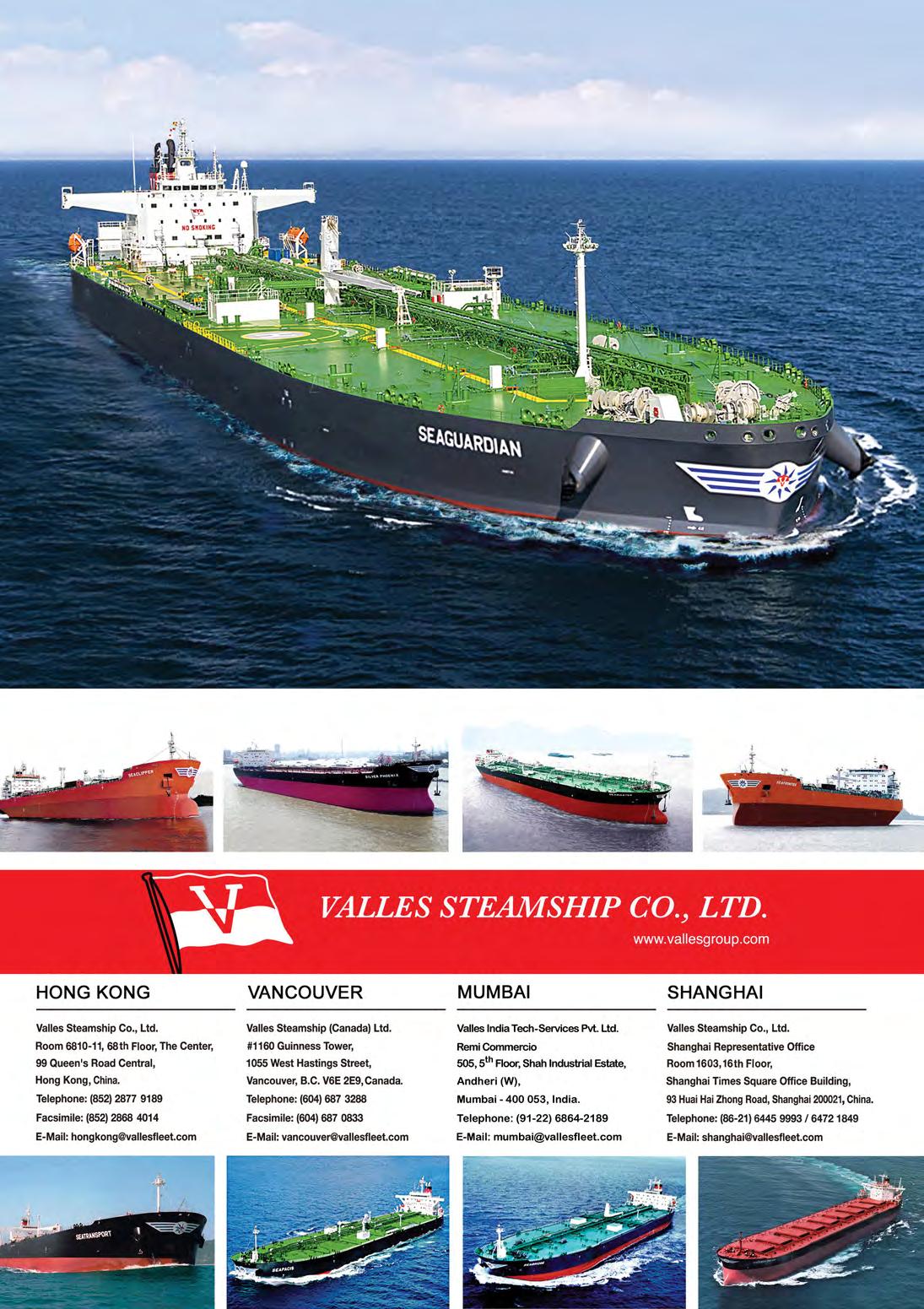
The industry voices converge on a broad consensus — that retention in 2025 and beyond will rest on five pillars:
1.) A stronger value proposition
Today’s recruits ask what the job offers beyond salary. Career progression, purpose and connection must replace hardship and hierarchy as selling points.
2.) Be tter onboard experience
Connectivity, food, rest and recreation are the daily details that make people stay. Owners still resisting fast internet or cutting rest hours are burning through goodwill.
3.) Smarter rotation and family inclusion
Predictable leave and recognition of family life are now central to retention. Crew don’t want to choose between a career and a home life.
As Ronald Spithout of VIKAND notes, five generations will soon work side by side at sea. Health care, mental wellness and proactive support have to adapt to that mix.
5.) Respect and recognition
From bridge to engine room, professionalism must be met with fair reward and a sense of belonging. As Manpreet Gandhi puts it, “Failing to uphold fair standards undermines the entire profession.”



Splash canvasses the industry on how to rethink the maritime blueprint to get more of a gender balance in maritime
For years, the shipping industry has promised inclusion. Campaigns have been launched, slogans crafted, panels convened. Yet, in 2025, women remain a rare sight on most bridges and engine rooms. The story isn’t about ability — it’s about design. The sea itself doesn’t discriminate, but the systems built around it still do.
Across shipowners, crewing managers, and welfare leaders, a growing consensus has formed: the question is no longer how to bring women to sea but how to rebuild shipping so that they stay.
Karin Orsel, CEO of MF Shipping Group and former president of WISTA
International, knows the limits of good intentions. Her company works closely with maritime schools and agencies to recruit women at every level and to create a workplace where they can thrive. But, she warns, progress demands more than numbers. “An inclusive culture doesn’t appear through policy — it grows from visibility and trust,” she says. MF Shipping highlights its female officers through stories, imagery, and mentorship, while enforcing a zero-tolerance stance on bullying and harassment and ensuring women’s practical needs are met on board.
Still, Orsel recognises that the system itself must change: “Improved work-life balance, safer onboard environments, mentorship programs, and visible career
paths are essential.” She argues for flexible policies — such as onshore work options during key life phases — to make maritime careers sustainable over a lifetime, not just a few contracts.
That theme of policy without practice runs through much of the industry.
Chirag Bhari from the charity ISWAN puts it bluntly: “We need to walk the talk. The policies developed by shipping companies must be implemented effectively.” He points to the basics — properly fitting safety gear, hygiene provisions, and awareness of maritime careers — as areas where rhetoric often outpaces reality.
“Supportive policies around maternity, marriage, and flexible shore opportunities are key,” he says.
The truth is simple: infrastructure


Ship Management
Crew Management
Maritime Training
Newbuilding
Buxtehude | Busan | Manila | Hamburg
Shanghai | Singapore | Colombo

on many ships remains designed for a demographic that has dominated the industry for centuries. “Males onboard and ashore need to change their mindset,” says Tom Bonehill of Norstar Shipping (Asia).
That mindset shift is at the heart of Steven Jones’s argument. The founder of the Seafarers Happiness Index believes systemic reform must benefit everyone — not just women. “This isn’t about adding women-specific changes to a fundamentally flawed system,” he says. “It’s about creating working conditions any professional would find attractive and sustainable.”
Jones points out that most seafarers, regardless of gender, struggle with long hours, poor rest, and limited space or support. “We’ve normalised unsustainable conditions,” he says. “Until we break this cycle and build an industry worth joining, we’ll keep failing at diversity, retention, and attracting talent.”
If the first step is acknowledging the gap,
the second is rethinking the architecture. “Diversity isn’t a checkbox — it’s a change in current,” says Ryan Kumar from Direct Search Global, a Singapore-based maritime HR firm. “It’s not about opening the door; it’s about redesigning the whole ecosystem.”
Kumar argues that the industry must move from slogans to structure. “Young women in academies need to see real examples — not posters. Mentorship, not marketing, will drive retention,” he says. For him, inclusivity starts with visibility: women captains and chief engineers need to be visible not as exceptions, but as precedents.
He outlines three key pillars:first, designing inclusively from the start, with ships built for privacy, safety, and dignity — not retrofitted for them. Secondly, creating structured career continuity, so women don’t have to choose between motherhood and maritime. And finally, aligning culture with compliance, so professionalism outweighs prejudice.
“We don’t need women to adapt to shipping,” Kumar says. “We need shipping to evolve for women.”
That evolution is already underway
in pockets of the industry. Carl Martin Faannessen, CEO of Noatun Maritime, has pushed female representation to over 6%, targeting 10% next year. “No rocket science,” he says. “We pick the best people for the job and argue for their merits.” For him, performance speaks louder than quotas. “Quota systems drive sub-optimal recruitment and retention,” he warns. “Let’s focus on excellence — and let women show they lift vessel performance.”
Faannessen credits progressive owners for backing the shift but admits that “many shoreside managers still think women onboard are great — just not on their ships.” That, he says, is where the cultural work remains.
Eva Rodríguez, HR marine director at Bernhard Schulte Shipmanagement, agrees that inclusivity must be systemic. “We have to move beyond the mentality that gives advantage to dominant groups,” she says. BSM has introduced mentorship programs linking female shore staff with women at sea and taken part in the Global Maritime Forum’s Diversity@Sea pilot project, testing new ways to make life at sea safer and more inclusive. “Equal
High quality ship management with an owner’s approach
With over 35 years of experience and a reputation for operational excellence, M.T.M. Ship Management provides an integrated, full-service platform to owners and financial institutions covering Ship Management, Crewing and Training, as well as ancillary Technical and Corporate Services.


opportunities are essential,” she says. “Bias, stereotypes, and inflexible career paths hold us back. Only by creating inclusive, safe, and fair environments can we attract and retain more women.”
For many leaders, visibility is key to breaking the cycle. “The more women we show in command roles, the more others will aspire to follow,” says Captain Tanuj Balani of Stag Marine. It’s a view shared by Peter Rouch, the head of the Mission to Seafarers: “Visibility is really important. A great way of overcoming misconceptions is to provide real-life examples of successful female seafarers.”
Rouch warns, however, that visibility without reform risks sounding hollow.
“Positive messaging while underlying issues remain unaddressed may not be effective,” he says. Loneliness, fatigue, and isolation continue to deter both women and men. “We must balance promotion with practical progress.”
Some companies are trying to turn talk into structure. Wilhelmsen Ship Management, under vice president for marine personnel Wiebke Schuett, has set a 10% target for female cadet intake (currently at 9%), backed by financial sponsorships through the Tom Wilhelmsen Foundation. The company also helps women transition ashore when they choose to — a key step toward making maritime a lifelong career, not a narrow path.
At Ardmore Shipping, senior vice president Robert Gaina highlights a new leadership programme, WAVES — Women on Ardmore Vessels: Empowerment and Success — to build community between women at sea and those ashore. “With 16 female officers onboard and our first female chief officer appointed, we’re proud of the progress,” he says.
“Collaboration between our teams creates the support network women need to thrive.”
Others stress the need for industry-wide awareness and shared accountability. Wallem Group CEO John Rowley lists “safe onboard environments, fair career growth, maternity benefits, customised protective gear, and medical updates” as essentials — but also calls for gender awareness training for all seafarers.
Vinay Gupta, who heads up Singapore’s Union Marine Management Services, simplifies the problem: “Only one change is needed — a change in mindset.” Policies and infrastructure can help, he says, “but unless the collective mindset shifts to see competence before gender, nothing truly changes.”
That theme — mindset before metrics — runs through the new generation of maritime leadership. NSB Crewing’s Simon Frank says the industry must accept that a female seagoing career “is allowed to be different than a male one.” Accept that, he argues, and the conversation becomes more honest — and more productive.
Even among the most progressive companies, a note of caution sounds. Ronald Spithout, managing director at OneHealth by VIKAND, warns against overpromising: “Efforts to attract more women should only be pursued when companies are genuinely prepared to support them. Without robust systems, recruitment risks creating false expectations.” True inclusion, he says, “can’t be built through campaigns alone — it requires authentic readiness and visible commitment.”
When the conversation about women at sea began in earnest a decade ago, it
often focused on representation. But as the testimonies of 2025 show, the deeper issue isn’t who is missing — it’s what kind of industry they’re being asked to join.
Jones’s warning rings through: “Until we build a seafaring life that respects professionals as professionals, we’ll never attract diverse talent.” In other words, the real diversity test lies not in gender, but in quality — of life, leadership, and labour.
Orsel’s hope is that the next phase of maritime reform becomes less about accommodation and more about integration. “A regulatory structure that enables work-life balance, mentorship, and mobility will benefit everyone,” she says.
It’s a sentiment echoed by Kumar, who calls diversity “not a compliance exercise, but a long game of endurance.” The point, he adds, isn’t to count women but to keep them. “When women feel safe, seen, and supported, the whole industry becomes stronger.”
The sea has always demanded strength. What shipping must now prove is that it can match that strength with fairness — building not just ships, but systems, that are fit for the future.



Nearly 8,000 seafarers responded to the latest annual survey carried by Danica Crewing Specialists. Highlights from this global poll are carried on the next two pages
The
98%
We









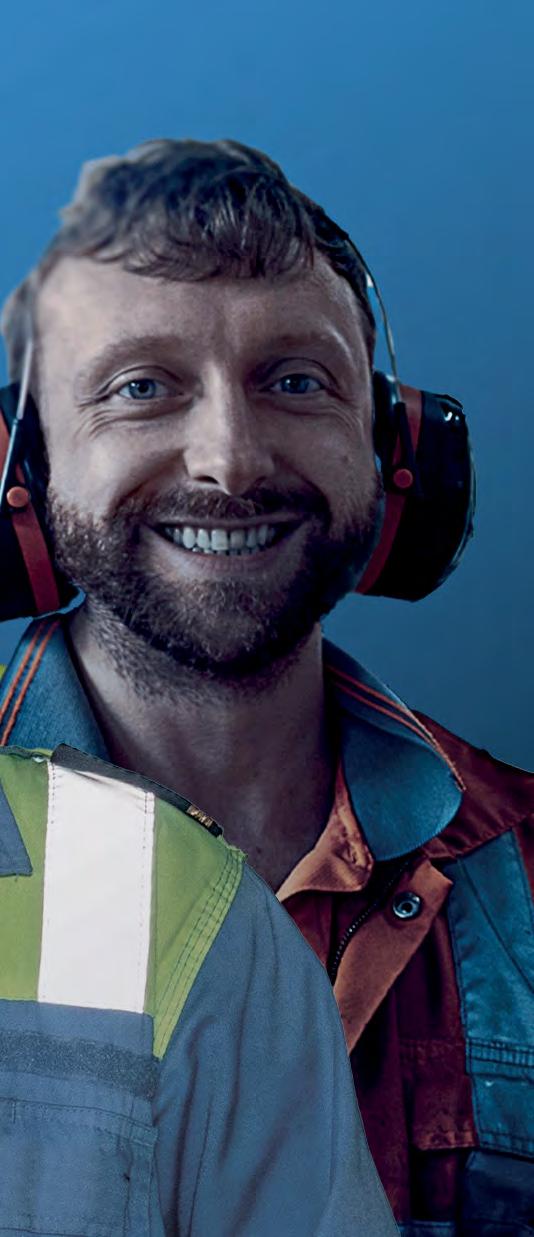













level since we started the survey in 2019.
However, one out of five seafarers still does not get home as agreed.
The number of seafarers reporting that they have not been paid on time is still high, although it dropped to 29%.
9% of seafarers, or nearly 1 out of 10, did not receive their salary in full.
Nearly one out of four seafarers reported a shortage of food and drinking water.
The number continues to be alarmingly high at 23%, which is within the same range as the previous year.
The number of seafarers who had to pay a commission to get a job dropped a little to 5%, which is the lowest number since we started the survey back in 2019, but still unacceptably high.
The detailed data show that mainly Russian, Georgian, and Filipino seafarers pay commissions at the same level as in previous years.
The number of seafarers who report bullying, racism or harassment has doubled since 2019.
The reason for the increase could be more awareness of the problem.
In 2025, 1 in 6 seafarers report bullying, racism or harassment, up from 1 in 8 in 2024.
As many as 8% of seafarers feel they have been discriminated against because of their race, double the figure in 2024.
2% of seafarers felt they had been exposed to harassment, also doubling from 2024. Overall, there is an increasingly significant negative trend over the years.
Over the years, more seafarers have been reporting mental wellbeing issues.
A record of 44% of the seafarers suffered from stress in 2025, which is a significant increase.
Also, the number of seafarers who reported that they did not get the statutory rest in accordance with rules increased to 37%.
In 2025, 9% of seafarers felt they had worked in unsafe conditions - about the same number as in previous years.
The number of seafarers who felt mentally depressed during their last contract increased from 11% in 2023 to 16% in 2025. (We have only included this question in the survey since 2023).
Since the 2024 survey, we also asked how many seafarers had been prevented from seeing a doctor ashore, and 3% answered both in 2024 and 2025 that this was the case.
FeltthatIworkedinunsafeconditions Refusedtoseeadoctorashore Ifeltmentallydepressedduringyourlastcontract



With the line between welfare and technology disappearing, the maritime industry faces a simple truth — connection is no longer optional
An in-depth Inmarsat survey of nearly 400 seafarers working on merchant ships, offshore support vessels or high-end fishing vessels across the globe shows that seafarers are increasingly experiencing a sense of a ‘floating home’ when it comes to their time onboard, a portent of what’s to come over the next decade.
Seafarers spend an average 8% of their annual salary on internet connectivity, the survey found, with the cost split equally between their usage at home and onboard their vessels.
When at sea, video calling, voice calling, and messaging family and friends were the most popular uses for the internet, with a huge majority saying the connections positively impacted their mental wellbeing.
During long voyages, seafarers said they were 23 times more likely to feel positive effects from these personal interactions, rather than negatives.
Staying in touch with friends and family were the main reasons given for needing connectivity, although seafarers also cited managing work-related tasks as important, as ships increasingly depend on real-time data for both compliance and competitive advantage.
Around two thirds of respondents put personal video or voice calls and text messaging in their top three uses for connectivity. Less critical, but still pronounced, were top three preferences for social media (51%), web browsing (34%) and watching movies, TV shows, sports
or other streamed content (29%). A small proportion identified shopping (11%) and gaming (8%) as top three online activities.
However, while 97% of these seafarers actively manage their own data usage at sea, more than four out of five said they exceeded their limit – with more than a third saying it happened often. Furthermore, a mixed picture emerged regarding satisfaction with connectivity at sea.
Of those surveyed, 28% said they were dissatisfied with the cost, while more than half said they would be willing to pay more for better connections.
Overall, internet usage among seafarers increases while they are in port, with 61% reporting higher usage and only 15% using it less. On average, seafarers use the internet 18% more while in port compared to when they are at sea. Although those who use their mobile phone plans often find it cheaper than vessel connectivity, the majority of the survey respondents (52%) indicated a preference for ship connectivity over their mobile plans or port wifi.
In a remarkable finding, 83% of the surveyed seafarers expressed concern about security and privacy while using a vessel’s internet – with one in nine of the seafarers reporting a data security issue, such as hacking or data loss, while connected to a vessel’s internet.
Clearly, for this seafaring constituency, work remains to be done on security before a ship can truly merit the comfort of a
floating home.
For Karin Orsel, CEO of MF Shipping Group, the direction of travel is obvious.
“For seafarers, staying connected and having real shore leave isn’t a luxury — it’s essential,” she tells Splash. “Over the years, we’ve steadily improved onboard connectivity, ensuring crew can contact their families while at sea, even though usage is subject to fair limits.”
Her company has worked with ports to make shore leave safer and more meaningful. With the new 2025 Maritime Labour Convention (MLC) updates now enshrining digital communication access in regulation, Orsel says connectivity and shore leave “are not extras but essentials for wellbeing at sea.”
That sentiment is shared across the sector. Ryan Kumar, from Singapore-based Direct Search Global, states: “Connectivity and shore leave aren’t perks — they’re lifelines,” he says. “If we’re serious about improving seafarer welfare, we have to stop treating them as privileges to be negotiated and start treating them as standards to be upheld.”
Kumar believes the industry’s priorities are still upside down. “We can’t talk about retention and resilience if we’re still debating wifi access in 2025,” he says.
“The message we send when we connect our systems better than our people is a loud one.”


Geopolitical pressures, increasing regulatory compliance, financial and funding stresses…
The shipping sector needs legal advice from experts that understand its commercial backdrop – anticipating the challenges of the future, as well as the opportunities.
As a top 10 global law firm with over 90 offices across the world, CMS and its shipping experts work with investors, owners, brokers, insurers and other players in the industry on both dayto-day issues and the most complex transactions and disputes.
Key contacts / 主要聯絡人:
Disputes / 爭端解決:
Andrew Horton (賀敦)
E andrew.horton@cms-hk.com
T +852 2533 7803
M +852 9260 7733
Steven Wise (韋樹勳)
E steven.wise@cms-hk.com
T +852 2533 7802
M +852 6278 9194


從今天開始為明天的世 界做準備
地緣政治壓力、監管合規不斷提高、財務 和資金壓力......
航運業需要瞭解其商業背景的專家提出 法律建議以預測未來的機遇與挑戰。
作為全球前10名、擁有90多家辦公室的 律所,CMS及其航運法律專家為投資者、 船東、經紀人、保險公司和業內其他參與 者就日常業務以及最複雜的交易和糾紛 提供法律服務。
Casualty / 海上事故:
Richard Oakley
E richard.oakley@cms-hk.com
T +852 2533 7876
M +852 6316 7622
Finance and Commercial / 融资及商法:
Conor Warde (魏丞泰)
E conor.warde@cms-hk.com
T +852 2533 7833
M +852 6847 2922
Tim Elliott
E tim.elliott@cms-cmno.com
T +852 2533 7878
M +852 5280 3502
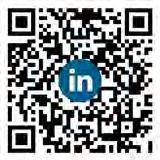

At classification society RINA, there’s a growing push to make connectivity part of compliance, not courtesy. “Minimum connectivity standards must be clear, universally applicable, and tied to enforceable global rules to eliminate inconsistencies across fleets and regions,” says Brian Yam, commercial director for Hong Kong and Taiwan.
“Connectivity is no longer a luxury — it’s a lifeline,” Yam continues. “Establishing baseline bandwidth, coverage zones, and cost transparency should be part of every vessel’s design and operational plan.” RINA’s MLC certification services already assess crew welfare holistically, including access to communication and rest, he adds.
Shipmanagers, too, are calling for hard rules, not soft promises. Captain Tanuj Balani, director of Stag Marine, argues that “connectivity should be part of ISMlevel welfare requirements, just like food or PPE.”
As Tim Hill, CEO of Stella Maris, points out, a “right to connectivity” means little unless it delivers meaningful communication. “A right is only useful if it allows seafarers to make video calls and stay genuinely connected with their families,” Hill says. “If access is excessively priced or limited to basic messaging, then it’s not a right in any real sense.”
For Hill, affordability is the next frontier. “Removing these barriers is essential if we are to make these fundamental rights a reality for every seafarer,” he says.
The double-edged connection
But as Manpreet Gandhi, marine director
at Ishima, the shipmanagement arm of d’Amico Group, notes, connectivity brings new complexities. “Modern technology now enables reliable internet almost anywhere at sea — a remarkable advancement,” he says, “but it can sometimes contribute to greater isolation when seafarers retreat into their cabins.”

by the technology evolving,” predicts Henrik Jensen, CEO of Danica Crewing Specialists. “Those shipowners not offering connectivity with speed and coverage will simply not be able to recruit the talent they need.”
To counter that, Ishima has placed a strong emphasis on social interaction and shared activities on board, Gandhi explains. “We encourage community, even as we support communication with families ashore. Balance is everything.”
That view is echoed by psychologists and welfare NGOs alike: connection without culture can risk replacing loneliness with silence.
Vinay Gupta, the head of Union Marine Management Services , argues that regulation is struggling to keep up with reality. “Technology is moving faster than policy,” he says. “With developments like Tesla’s upcoming satellite-connected phone, we’re not far from a world where SIM-based communication systems become museum pieces.”
Gupta believes the transformation will be irreversible. “Once such technology becomes mainstream, connectivity at sea will no longer be a privilege — it will be a baseline expectation,” he says.
The implications for shipowners are profound. Crew recruitment, welfare compliance, and even operational resilience will increasingly hinge on digital inclusion — not bandwidth as a perk, but bandwidth as infrastructure.
Ultimately, the issue is moving beyond welfare into workforce strategy. “Connectivity is going to be solved
Jensen says younger seafarers in particular view digital access as a marker of professionalism. “It’s about respect and modernity,” he explains. “A ship with no decent connection isn’t seen as tough — it’s seen as behind.”
That view is being borne out in recruitment data. Crewing agencies increasingly report candidates asking about wifi and social media policies before they even ask about salary. For an industry fighting to attract and retain talent, that shift is decisive.
The era of the disconnected vessel is ending. What’s emerging instead is a digital seascape where data, welfare and identity converge — where connection is both operational and emotional.
The “floating home” that Inmarsat’s study described is no longer a futuristic concept. It’s a fast-approaching reality — one where bandwidth has become as vital as bunkers, and where the quality of connection may soon define the quality of life at sea.
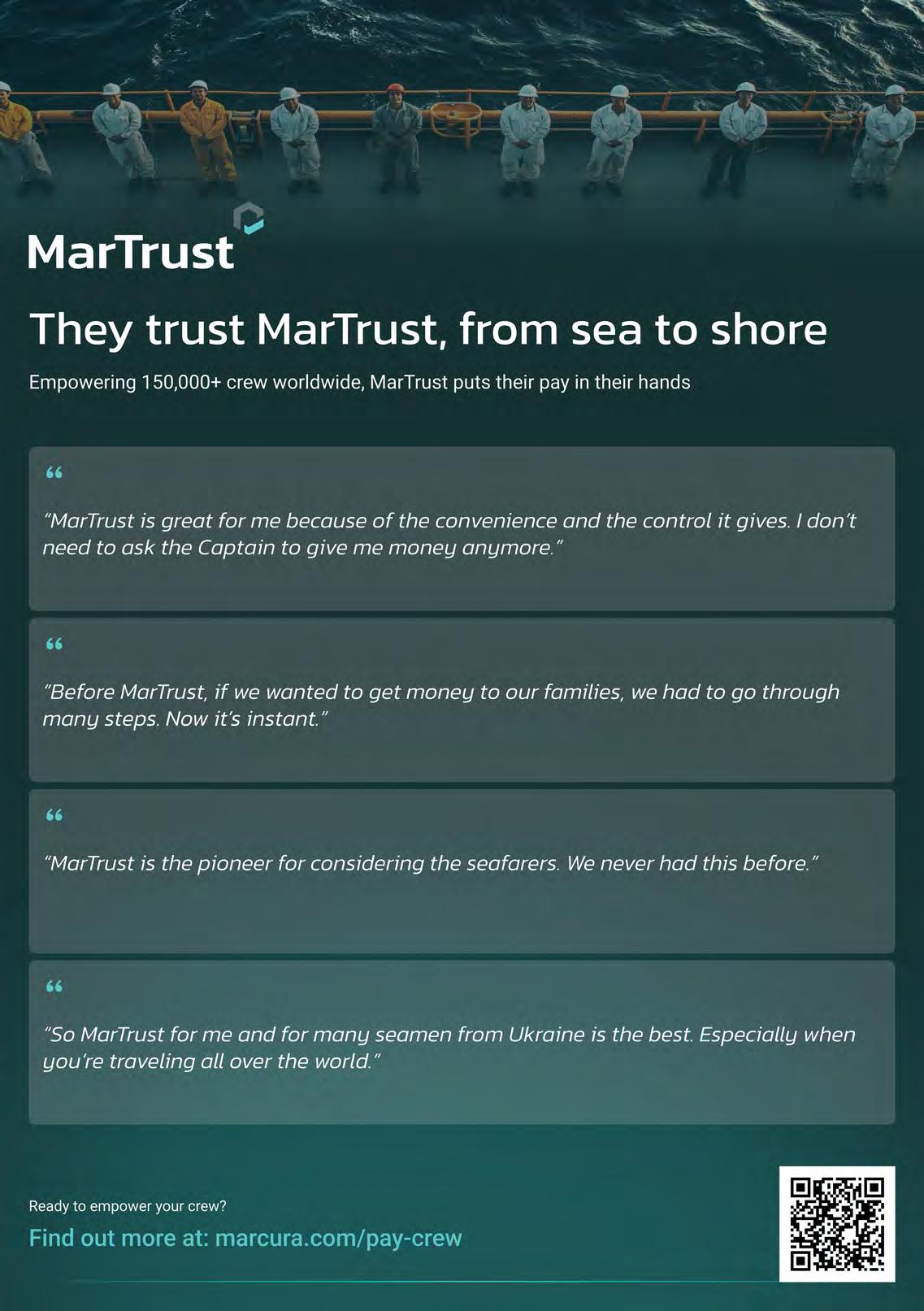

When people are empowered, technology becomes a tool for excellence, not confusion
As the industry races toward digitalisation, a quiet question hums beneath the surface is the human element keeping pace? Splash asked shipping leaders whether smart technology risks outsmarting its users
Shipping’s digital transformation is no longer theoretical. AIpowered engines fine-tune routes, sensors predict maintenance failures, and dashboards light up bridges with a constant flow of data. Yet behind the gleam of technology, an old truth endures — a ship is only as smart as the people running it.
When Splash asked industry leaders whether the industry’s adoption of smart technology risks being undermined by crews’ ability to understand it, the consensus was clear: technology must empower, not overwhelm. But how to ensure that happens remains an open question.
Karin Orsel, CEO of MF Shipping Group, is among those who agree the risk is real. “Technology is only as effective as the people who use it,” she says. “This is why we focus on user-friendly systems, ongoing training, and empowering our crew to interpret data accurately. Human understanding is critical to operational safety and efficiency.”
It’s a sentiment shared across the
sector. The excitement surrounding digital tools has at times eclipsed the simple reality that they are only as good as the interpretation behind them. As Cyril Ducau, CEO of Eastern Pacific Shipping, puts it: “Technology is only as strong as its user interface and training. We cannot expect crew to embrace new systems without proper training and user feedback.”
At EPS, Ducau explains, innovation is co-created with seafarers in mind. “We work closely with our technology partners to co-design and implement smart, practical and intuitive solutions,” he says. “This approach ensures that innovation enhances and empowers our crew safely and effectively.”
Angad Banga, group COO at The Caravel Group, takes a similar line, emphasising empowerment over automation. “When people are empowered, technology becomes a tool for excellence, not confusion,” he says. Fleet Management, Caravel’s shipmanagement arm, is among those blending digital learning and onboard systems to make sure smart tools
lead to smarter outcomes.
For Allan Falkenberg, COO of V.Group, the key lies in digital literacy. “Data and digital literacy are core foundational pillars to ensure better regulatory compliance, decision making and safety,” he explains. “Without the right training, smart technologies – from AI-driven systems to predictive maintenance – risk being underused or misapplied.”
To close that gap, V. is betting on immersive learning. “From elearning modules to gamification, steps are being taken to train crew to safely manage complex systems,” Falkenberg says.
Others, however, believe the issue is less about comprehension and more about connection. Carl Martin Faannessen, CEO of Noatun Maritime, argues that the human-machine divide will increasingly be bridged by shoreside expertise. “We are less concerned with the crew understanding the information being







We’re still training crews like it’s

generated, as this information will be increasingly processed ashore,” he says.
For Faannessen, the future lies in collaboration rather than comprehension. “This opens the door to a revived partnership between ship and shore, where the data collected and the reality observed need to reach a handshake,” he says. “Where we are concerned is the ability to manage repairs on datacollection and analysis systems as they become increasingly critical to the safe running of the vessel.”
Not everyone sees an urgent problem. Vinay Gupta from Singapore-based Union Marine Management Services argues that the new generation of seafarers is already tech-ready. “With more and more crew now coming from a generation raised within a technology-driven education and training framework, there is little doubt that today’s seafarers can understand and apply these tools effectively,” he says. “The key lies not in their ability to use technology, but in ensuring the systems remain intuitive, reliable, and supportive of good seamanship.”
That last point — preserving seamanship — is echoed by others. Technology may help optimise, but judgment remains the final frontier. Ryan Kumar from Direst Search Global, a Singapore-based HR firm,
sums it up, saying: “Smart ships mean nothing without smart interpretation.”
“It’s not that seafarers can’t understand the data,” Kumar continues. “It’s that the industry hasn’t caught up in how it trains, trusts, and transitions its people to think digitally. We’ve built ships that can self-diagnose, optimise fuel, and predict maintenance. But we’re still training crews like it’s 1995.”
Kumar argues for a new training philosophy. “Technology is only as good as the context behind it,” he says. “A dashboard can show you a fault, but it takes experience — and judgment — to decide what happens next. Training must shift from instructional to interpretive: less ‘press this button’ and more ‘understand why this matters.’ We don’t have a technology problem. We have a translation problem — turning raw data into real-world decisions.”
At Ardmore Shipping, Robert Gaina, senior vice president of commercial, agrees that the human element is central. “Unless crew are supported and engaged in the deployment of new technologies onboard, we are unlikely to fulfil the potential of those solutions,” he says. “We’re great believers that the human element is central to our adoption of the latest digital solutions onboard. When we trial any new technology, we listen closely to the feedback from the men and women onboard.”
That sense of feedback and inclusion is crucial, says Chirag Bhari from ISWAN, a shipping charity. “Rapid technological advancements may sometimes outpace the crew’s capacity to fully understand and utilise them,” he says. “Therefore, seafarers should be at the centre of technology design and development. New tools and systems should serve as enablers, addressing existing challenges and enhancing safety and efficiency onboard.”
Bhari also highlights the broader human side of smart shipping. “Ships should provide social spaces for crew interaction, proper infrastructure to promote physical and mental wellbeing, and comfortable living conditions,” he says. “After all, a ship is like a second home where seafarers spend a significant part of their lives.”
For Eva Rodriguez, director of HR marine at Bernhard Schulte Shipmanagement, the question isn’t about capability but capacity. “The key question is how much innovation we can reasonably expect from our people,” she says. “All new and smart technologies require proper training, and it is essential to take the necessary time to ensure this is done thoroughly.”
BSM’s approach, Rodriguez explains, is







to match technology rollouts with human readiness. “We place great emphasis on effective change management, comprehensive risk assessment, and well-structured rollout training to support our crews in understanding and effectively using these technologies.”
Others believe that generational change will naturally bridge the gap. Simon Frank, vice president of crewing operations and business development at NSB Crewing Solutions, is confident in today’s workforce. “Present and future generations of seafarers are very capable in understanding digitally displayed information and data and making the right decisions,” he says. “Even more when they are supported by a highly experienced and trained shore team.”
For Lars Gruenitz, managing director of Norstar Ship Management, the key lies in design. “It all depends how information is presented to the crew,” he says. “The design of the user interface is very important, as well as a clear focus on why the data is needed and what value it gives to the crew.”
That principle underpins much of the product design philosophy at StormGeo, where Espen Martinsen, chief commercial officer, sees usability as mission-critical. “The effectiveness of any smart technology is dependent on how actionable and understandable it presents its insights,” he says. “For digitalisation to succeed, data and AIdriven insights must enhance situational awareness and support better decisionmaking at sea.”
Martinsen notes that captains must feel supported by both people and systems. “In the near future, where advanced vessel technologies become more prevalent, actionable insights

The real challenge lies in the sheer number of similar digital tools
from user-friendly and understandable technologies will be essential,” he says. “Ultimately, captains must trust the tools — and know that human experts stand ready to assist whenever needed.”
The theme of trust — and training — runs through many responses. Christian Ioannou, CEO of MCT Consultancy, believes too much smart technology is rolled out before seafarers are prepared to use it. “There is a risk in adopting smart technology for which training is the key,” he says. “Technology is only as good as the people operating it. Seafarers need practical training to ensure understanding and to be able to act on the data they are provided with. Theoretical sessions cannot replace hands-on training.”
Captain Tanuj Balani, director of Stag Marine, agrees that information overload is the danger. “We must shift from information overload to actionable insight — through intuitive dashboards, better onboard training, and feedback loops between ship and shore,” he says.
Vikrant Gusain, CEO of shipmanager Dockendale, takes a more optimistic view. “The younger generation of seafarers is highly tech-savvy and technology adoption is progressing
in a phased and adaptive manner,” he says. “The real challenge lies in the sheer number of similar digital tools often introduced by different owners or charterers, leading to confusion and a lack of standardisation across fleets.”
And for Steven Jones, founder of the Seafarers Happiness Index, the question itself is misframed. “If one’s seafaring workforce’s ability to understand is risking the use of smart technology, perhaps it isn’t as smart as you might think,” he says. “If such technology had been conceived and developed with seafarers adequately consulted, there would not be a disconnect in ability.”
Where things go wrong, he argues, is when systems are “thrown at old problems” without human context. “When everyone is just expected to get on with it, that is where things can go awry,” he warns. “The benefits for all are eroded or lost completely.”
Across all these perspectives, one conclusion emerges: the smartest system still depends on the smartest application. Whether through better training, intuitive design, or trust built between ship and shore, the success of maritime technology will be decided not in code, but in context.








Talent and time can be redistributed as technology alleviates efforts spent on more menial tasks




Artificial intelligence may promise efficiency at sea, but the people on deck remain the ultimate decision-makers
Shipping is on the cusp of a technological shift. Autonomous systems and artificial intelligence are increasingly moving from the lab to the bridge, promising to change how vessels are operated and managed. Yet despite headlines about fully automated ships, the reality on the water remains firmly human. According to Carl Martin Faannessen, CEO of Noatun Maritime, “99% of all vessels being delivered this year will be instantly recognisable, and sailable, by a 60-yearold seafarer. We see the shape of things to come, but we are not holding our breath.”
Faannessen notes that while autonomous vessels may work in specific geographies and niche applications, the vast majority of ships will continue to rely on crew for the foreseeable future. AI will likely play a supporting role, assisting shoreside teams in providing better information to crews onboard, but its ultimate impact remains uncertain. Cybersecurity is an area of increasing concern — GPS spoofing, hacking of engine control systems, and navigation risks are all real — yet Faannessen believes many of these can be managed with existing best practices and continued focus on situational awareness onboard.
For seafarers, the message from across the industry is consistent: AI is here to
empower, not replace, the human element. Captain Rajiv Singhal, managing director at MTM, emphasises this approach. “We believe in automation not replacing humans, instead empowering them to lead smarter ships with confidence,” he says.
At Bernhard Schulte Shipmanagement, the focus is equally on people as it is on technology. Director HR marine Eva Rodriguez explains, “As demands on our seafarers grow — whether from AI and autonomous vessel technologies, new fuels, increased data monitoring, digitalisation in general, or cybersecurity — the scope of their duties and the associated pressures are expanding significantly. We are actively addressing these new requirements by adapting and enhancing our training programmes accordingly.”
Rodriguez stresses the need to bolster human skills alongside technical ones. “We must place much greater emphasis on leadership skills, emotional intelligence, cognitive abilities, and resilience. Historically, the human factor was often overlooked, but today we are committed to strengthening it considerably. After all, mental health challenges cannot be resolved by AI alone.”
Wilhelmsen Ship Management is taking a tailored approach. Vice president for
marine personnel Wiebke Schuett says, “There’s no one-size-fits-all approach to AI training, as every vessel operates with different levels of technology. We are progressively training our crew based on the specific systems onboard, many of which already include AI features. Cybersecurity remains a key focus — it’s mandatory for all seafarers and regularly updated. We’ve also developed a robust micro-learning platform to deliver timely and relevant training content that keeps our crew up to date with emerging technologies.”
At Anglo-Eastern, the world’s largest shipmanager, the emphasis is on integrating AI to enhance operational performance without removing the human element. Chief commercial officer Niraj Nanda outlines the approach: “Our focus with AI is to better process information for faster and accurate decision making, reducing the burden on the ship’s crew and improving their wellbeing. We are working with our teams at sea and ashore to integrate AI in predictive maintenance, voyage optimisation and assisting with regulatory compliance.”
Nanda details the company’s technology ecosystem. “Our Asset Management & Technical Support Division uses high-frequency telemetry,



of GREAT SERVICE ! of GREAT SERVICE

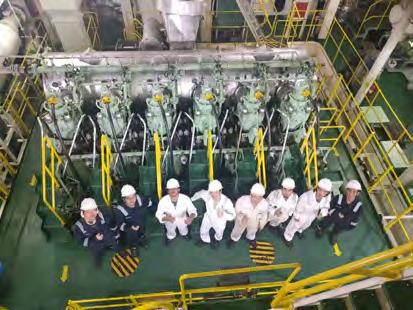
Our staff experience covers some 80 bulk vessels ranging in size from small multipurpose bulkers through Handysize, Supramax, Ultramax, Panamax to Capesize vessels trading regionally and worldwide. BULK
NEWBUILDING SUPERVISION
Our newbuild team project experience is based on various shipping and offshore newbuild projects over a 7 year track record.

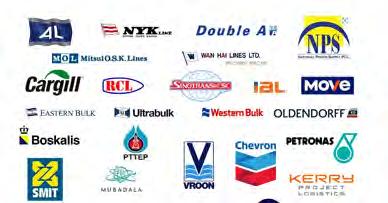
CONTAINER / MPP
Our staff experience covers some 30 vessels ranging in size from 1,100teu to 3,500teu, geared and gearless, reefer fitted, running on intensive scheduled services regionally within Asia, North/South America, Europe, Australia and New Zealand
Our staff experience includes full management of STS/Lightering vessel / Terminal for eight years. Offloading Capesize, Panamax and Ultramax vessels with the industrial high-cycling Tsuji cranes, then transferring from storage holds via EMS-TECH high spread conveyor and 75meter boom to shallow draft tug & barge trains.
Our staff experience covers some 26 units including Dive/ROV Support vessels, AHTS, Heavy Lift Shear Leg barges, Jack-ups, Drillships, SemiSubmersible Drilling units and FSO projects. OFFSHORE
RORO / ROPAX
Our staff experience covers several RoRo, Pure Car Carrier and RoPax vessels supported by long experienced colleagues in Europe, China and Japan, RoRo and RoPax sectors.
predictive maintenance algorithms, and AI-assisted dashboards to monitor over 400 data points per vessel. These insights power condition-based maintenance, reduce downtime, and extend asset life, transforming shipmanagement from a more reactive service to proactive, datadriven operations.”
Anglo-Eastern has also launched its Sustainability and Performance Services, a digital solution to help charterers and commercial operators navigate maritime decarbonisation while optimising vessel performance. Nanda adds, “From 2023 to 2025, the underlying systems monitored over 800 vessels across nearly 46,000 voyages, with over 4,300 crewmembers trained for vessel optimisation, and over 739,000 performance reports analysed, achieving a reduction of over 700,000 tons in CO₂ emissions and over 225,000 tons in fuel usage. This has translated into cost savings of approximately $135m.”
Caravel Group, and subsidiary Fleet Management, are exploring AI’s potential to streamline tasks and improve safety. Group COO Angad Banga says, “We do not believe that technology will replace jobs, however talent and time can be redistributed as technology alleviates efforts spent on more menial tasks such as reporting. It also has great potential to strengthen protections for our people and improve safe operations.” For example, Banga discusses recent investments in AIassisted tools such as the implementation of Captain’s Eye to provide an additional watch, detecting time-critical events such as small-scale fires or unauthorised entries, and alerting crewmembers. At the same time, Caravel is investing in upskilling its people.
StormGeo, which supports maritime operations from a technology standpoint rather than employing seafarers directly, highlights the importance of preparing both sea and shore teams for


AI integration. Chief commercial officer Espen Martinsen explains, “StormGeo’s onboard voyage planning solution, s-Planner, leverages advanced AI models to analyse historical and real-time vessel performance data. These insights are used by crews at sea and on land to refine routing strategies that ensure optimal voyage outcomes and support the operational safety and situational awareness of seafarers.”
Martinsen underscores the critical role of cybersecurity and data integrity. “We work closely with our customers to ensure that our AI-driven digital tools are intuitive, transparent, and built to support the people using them. Cybersecurity and data integrity are core priorities, making sure that crews can trust the information and routing strategies they rely on.”
Manpreet Gandhi, marine director at Ishima, the shipmanagement company of the d’Amico Group, echoes the emphasis on training. “While AI holds great potential to improve safety at sea, it is equally important to ensure that crews are properly trained and prepared, as insufficient understanding can lead to new risks. We are also closely following developments in autonomous vessel technology and actively preparing our seafarers through continuous learning and upskilling initiatives.”
From a human resources perspective, Ryan Kumar of Direst Search Global warns that training must evolve. “The next phase of training must go beyond navigation and machinery. It must include cyber awareness, data literacy, and systems thinking. The ability to detect, question, and respond to digital threats is just as important as handling an engine failure. AI is here to assist, not absolve. But we must ensure technology doesn’t outpace trust.
Because when things go wrong — and they will — the system will still look to a human for the final decision. In the end, the smartest ship is only as wise as the person commanding it.”
Steven Jones, founder of the Seafarers Happiness Index, argues for inclusive dialogue. “We do not currently truly know what extent or how fast AI engagement will take root in the control, management and oversight of ships. So it is all a guessing game. We need to ensure that seafarers feel part of the debate and dialogue. They have been ignored and cut from other discussions around progress, such as decarbonisation. To shun seafarers again in this pivotal issue would be incredibly misguided and wrong.”
The consensus is clear: AI will not replace seafarers but will redefine their roles, responsibilities, and required skillsets. Across the industry, companies are investing in both technical and human-centric training to ensure crews are prepared for a digital future. Upskilling, cyber awareness, emotional intelligence, and resilience are as crucial as understanding predictive maintenance or voyage optimisation dashboards.
The rollout of AI at sea is a collaborative challenge — balancing innovation with safety, efficiency with wellbeing, and technology with the human factor.
Shipping is preparing for a future where AI is a tool, not a replacement; a partner in operational safety, environmental compliance, and performance, but one that depends entirely on the humans it supports. In every corner of the industry, training centres, micro-learning platforms, and onthe-job digital programmes are ensuring seafarers can meet the challenge.

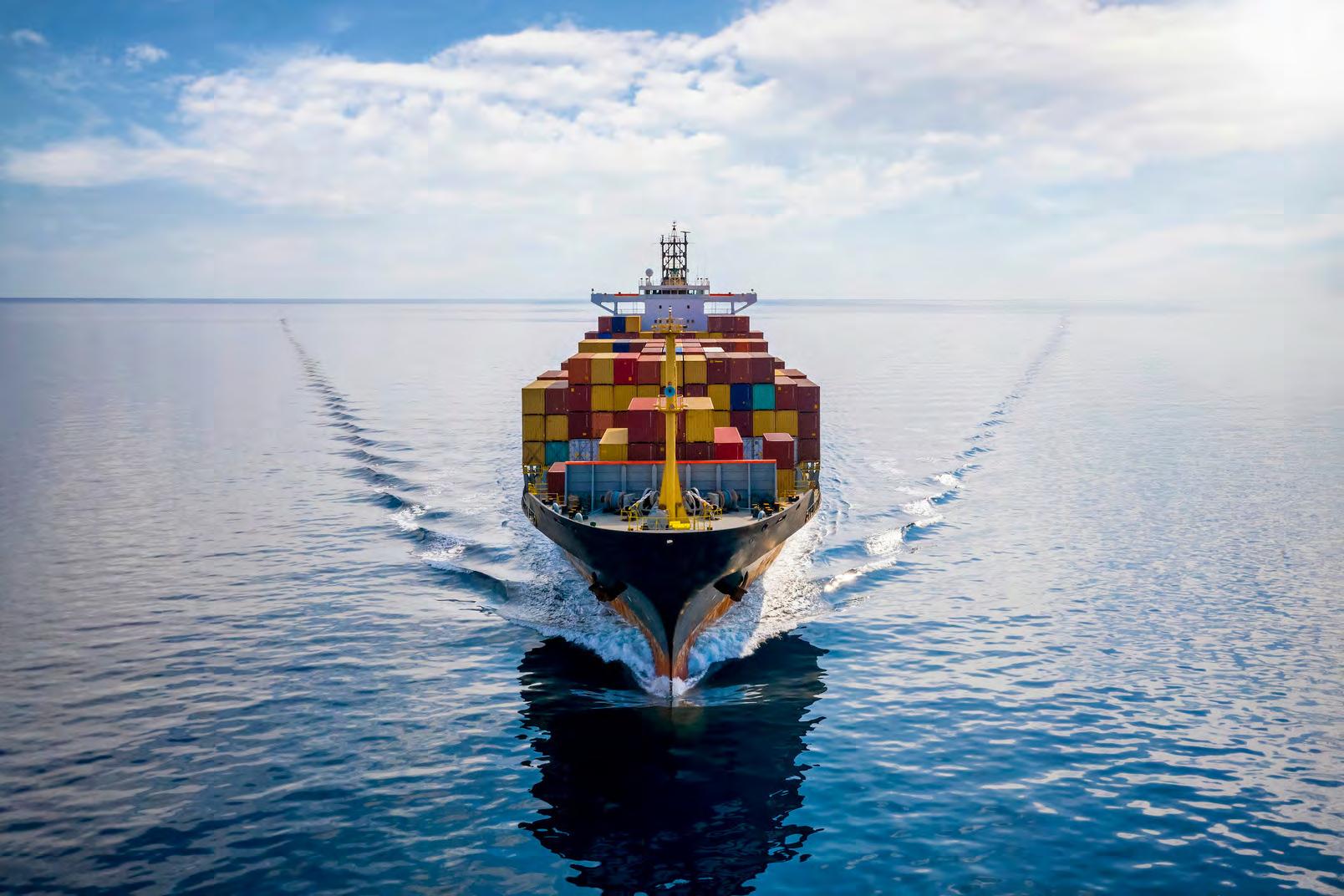


At Oceanic, we place seafarers’ health and wellbeing at the core of what we do
Understanding the unique challenges of life at sea, we provide tailored support in both nutrition and overall wellbeing, from healthy meals to wellness programs, to help our crew stay energized, focused, and strong. Our approach promotes happiness, resilience, and performance on every voyage.
Dedicated Wellbeing Support: Fitness and nutritional guidance
Tailored Healthy Meals: Designed by culinary and nutrition experts to suit cultural, medical, and religious needs
Balanced Menus: Nutritionally aligned with WHO, MLC, and global standards
Ongoing Nutrition Education: Empowering seafarers to stay healthy, motivated, and resilient
Wellness Programs & Campaigns: Promoting active and healthy living at sea


September’s Maritime CEO Forum held at the Fullerton Hotel in Singapore explored one of the most pressing questions in shipping today: as artificial intelligence and digitalisation transform the sector, how can the workforce adapt, upskill, and thrive in a human-centred maritime future?
The discussion, moderated by Mark Charman, CEO and founder of Faststream Recruitment, drew contributions from Marco Camporeale, vice president at Inmarsat; Su Yin Anand, partner at IBM Consulting and co-founder of The Captain’s Table; Vikas Trivedi, co-CEO of shipmanagement at Synergy Marine Group; and Vinod George, general manager of operations at CMB.TECH.
To set the scene, Charman asked the audience whether AI would create more maritime jobs than it eliminates. The show of hands revealed caution: many expected a reduction in jobs, though others predicted status quo or modest gains.

Marco Camporeale of Inmarsat stressed that AI is primarily a bridge between ecosystems. “On ships, the impact of AI will be to connect operations more efficiently, streamline intelligence, and assist crew in making smart decisions, whether in navigation, technical operations, sustainability, or compliance,” he said. Camporeale emphasised that AI will support decision-making, incident response, and training, but the human element remains essential. “We need to have the right balance as of today,” he said.
Anand highlighted the growing demand for digitally literate, data-literate, and

tech-savvy crew. “Ships are now highly connected with IoT sensors and realtime data links. This shifts the demand towards more tech-enabled, data-driven operations,” she said. Anand explained that seafarers increasingly need to interpret dashboards, troubleshoot onboard systems, and maintain cybersecurity. “High-tech ships are transforming the ratio of crew attention from physical operations to computerbased tasks. Technical proficiency for the remaining crew is increasing, even as some roles are reduced.”
Charman and the panel agreed that the human workforce remains central. “In our survey of senior maritime executives, 61% said AI is their number one personal development priority. Two years ago, it was all about ESG and sustainability,” Charman said. The panel highlighted that 68% of executives now use AI in their daily work, up from 26% two years ago.
Anand stressed the importance of upskilling for an AI-driven future. “We need to start by understanding the business in five years and what skill sets will be needed,” she said. “You shouldn’t recruit for skills that will be out of fashion in two or three years. Employees need to feel comfortable using AI, seeing how it augments productivity rather than replacing jobs. Management support is critical – if leaders aren’t comfortable with AI, it will never be adopted effectively.”
Trivedi focused on the human dimension. “AI works with you as a coworker, not just a productivity tool. As AI takes over repetitive tasks, we need to focus more on what it means to be
human in the workplace,” he said. Trivedi stressed the importance of non-technical skills, such as situational awareness and problem-solving, when technology fails. “Your HR policies now have to govern a workforce combined with AI. Are we thinking enough about social and cultural development at work?”
Anand raised a critical concern: overloading crews with data can exacerbate fatigue and reduce situational awareness, increasing the risk of maritime incidents. “Human error is the major cause of maritime accidents, and throwing more data at the crew without considering its impact on cognitive load is a serious risk,” she said.
George echoed the need for crew involvement in technology adoption. “Do we really take crew input when designing these systems? AI and cameras are being deployed on ships, but if the crew isn’t consulted, adoption suffers. The IMO is reactive – rules come after incidents. We can’t expect AI to replace human judgment,” he said. George highlighted practical examples, such as automated draft readings, which still require human verification, illustrating the tension between automation and regulatory compliance.
Trivedi argued that while AI may replace repetitive jobs, it largely augments human capabilities. “Automation can’t run an organisation entirely on AI because of risk. Implementation creates new roles as well as efficiencies,” he said. Camporeale reinforced that AI primarily aids documentation, training, and operational support rather than eliminating crew.

Purus is a world leader in providing global energy customers with services across the entire maritime energy transition value chain. We own and operate one of the world’s largest and youngest fleets of environmentally-advanced gas carriers and offshore energy support vessels.
From the deck to the mess hall, our Purus core values represent more than just principles, they shape everyday life at sea for our crew onboard.
We are committed to safety and quality across our operations, with a focus on safeguarding crew health and mental wellbeing.

We continue to challenge the status quo with cutting-edge solutions Starlink connectivity is now available onboard our newest vessels.

We believe in building longterm relationships, fostering a collective culture of respect, diversity, and inclusion for our multinational seafarers.

From ergonomics on the bridge to social spaces below deck, seafarers are urging shipowners and yards to listen to their lived experience and rethink what makes a well-designed vessel
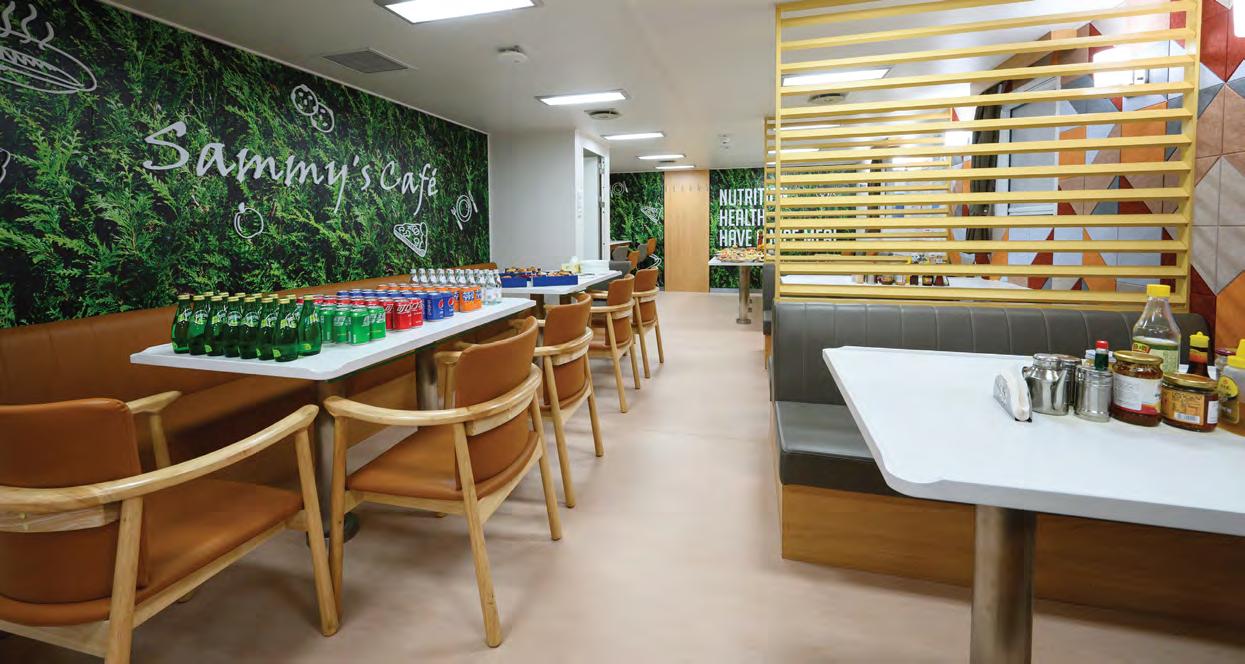
It remains one of the most common rants among the world’s seafarers – why aren’t they more engaged in the design of ships, the very places they live, breathe, and work for months on end?
Carl Martin Faannessen, CEO of crew manager Noatun Maritime, doesn’t hesitate. “It remains a mystery why this is not part and parcel in every program to design a new vessel type or a newbuildprogram,” he says. “Many owners do take the crew into the projects, but there is room to improve on this across the industry.”
That call for better integration of seafarer insight into naval architecture is echoing louder than ever across the industry. From the bridge to the engine room, those who know ships best argue they should have a seat at the design table — not as an afterthought, but as an essential part of how ships are conceived.
For Steven Jones, founder of the Seafarers Happiness Index, the logic is obvious. “From performance to living conditions, the idea that ships are designed and built without user input seems utterly ridiculous,” he says. “From ergonomics to functionality, to the testing conditions of crew living and working together — we can do better. We must do better, and that will need experiential insights. The kind that can only come from those who sail.”
Captain Tanuj Balani, director at Indian compliance specialist Stag Marine, agrees. “Designers sitting in offices often overlook ergonomics, workflow, and situational awareness that only seafarers experience,” he says. “It’s one thing to see a bridge layout on paper; it’s another to live with it during a storm.”
This growing frustration stems from a simple truth: too many ships are still built for cargo, compliance, or cost — not for the humans who operate them.
At V.Group, one of the world’s largest shipmanagers, Allan Falkenberg, the firm’s chief operating officer, says the benefits of involving seafarers are tangible. “Crew live and breathe every aspect of a vessel and have invaluable insights on how ships can be better designed for both comfort and performance,” he says.
He lists the issues that can make a huge difference to life at sea — “operational considerations around noise and vibration levels impacting sleep, cabin size, layout, and the availability of shared spaces to socialise.”
“Some forward-thinking owners already recognise this and are investing in spaces that genuinely enhance safety and wellbeing,” Falkenberg continues. “Examples of human-centred ship design can include minimising crew exposure to hazardous areas when operating future fuels, through remote monitoring and
automated systems. Onboard gyms, sports facilities, cafés and recreation rooms can also create comfortable environments where crew can relax and connect with peers, helping ease stress and build camaraderie.”
He adds that as the ship design debate becomes dominated by decarbonisation and digitalisation, it’s often “the simpler things that make the biggest difference.”
“With our female cadet programme launched with a key customer, we are ensuring that input from our seafarers has been taken into account when designing specific spaces for female cadets,” Falkenberg notes. “When crew are spending months onboard in the same environment, these lived experiences matter.”
Few owners have taken this issue as seriously as Eastern Pacific Shipping (EPS). The Singapore-based giant has been rethinking shipboard life through its Life-at-Sea Programme, which CEO Cyril Ducau says is “designed to close the gap between sea and shore.”
“We are already setting new benchmarks in living conditions onboard,” Ducau says, pointing to state-of-the-art gyms, padel courts, pool tables, table tennis areas, saunas, and hydroponic systems designed to promote wellness, recreation, and connection - EPS




accommodation is pictured in this feature.
“As we grow our 7,000-strong workforce, we are continuously enhancing all aspects of wellness and connectivity at sea — wellness encompassing both physical and mental wellbeing, and connectivity encompassing digital and human connections,” he explains.
EPS has gone as far as redesigning accommodation, gyms, communal spaces, and galleys with the direct input of ex-seafarers. “Our design teams are guided by crew insights, practicality, and functionality to enhance life onboard,” Ducau says.
He notes that reliable internet connectivity has become just as important as gym space. “Every EPS vessel is equipped with high-speed satellite internet, and data allowances and connectivity packages are regularly reviewed to ensure that our seafarers remain connected to their families, shore colleagues, learning platforms, and the wider world.”
“These efforts reflect our belief that a fulfilling life at sea goes beyond safety and pay — it is about dignity, comfort, and community,” Ducau stresses. “By reimagining shipboard life through physical, mental, and digital wellbeing, we aim to make every EPS vessel a true home at sea.”
Dutch owner Karin Orsel, CEO of MF Shipping Group, fully agrees. “Those who operate the vessels daily have invaluable insights into usability, ergonomics, safety, and efficiency,” she says. “Incorporating their feedback leads to safer, more practical, and higher-performing ships.”
At Stella Maris, a leading maritime welfare charity, CEO Tim Hill views seafarer input as a moral as well as operational necessity. “Listening to those who use ships every day should be standard practice,” he says. “Input from crew can improve ergonomics, safety, comfort, and social spaces. These are factors that directly affect wellbeing and morale. Taking these perspectives into account benefits both the company and the crew.”
The idea that ships are designed and built without user input seems utterly ridiculous
From a shipmanagement standpoint, Manpreet Gandhi, marine director at Ishima, the d’Amico Group’s in-house manager, says his teams are already doing it. “Gathering seafarer feedback is an integral part of our approach, particularly when it comes to the design and layout of machinery spaces and other key operational areas,” he says. “Prioritising human-centric design not only enhances efficiency but also plays a crucial role in reducing the risk of accidents and improving overall safety onboard.”
At NSB Crewing Solutions, vice president of crewing operations Simon Frank describes seafarers as the “superusers” of ships. “They provide the best and most detailed experiences on how they are working, the accessibility of hatches, valves, bridge layout, etc.”
From the Philippines, Marlon Roño, president of Magsaysay People Resources Corporation, reinforces the same point. “Seafarer input should be incorporated in ship design,” he says. “They can immediately provide practical insights that can resolve common ergonomic challenges and enhance safety and efficiency onboard. Seafarers are the end-users and frontline operators, and since the vessel serves as their second home, their insights are vital in creating a safer and more livable environment.”
At RINA, the Italian classification society, Brian Yam, a director, says the value of this collaboration is measurable. “Seafarers’ operational insights are invaluable,” he says. “Feedback from seafarers has influenced the ergonomic design of bridge consoles and the integration of smart monitoring systems. By bridging technical standards with frontline experience, we help shipowners build vessels that are safer, smarter, and more commercially resilient.”
For Wiebke Schuett, vice president for marine personnel at Wilhelmsen Ship Management, the logic is equally clear.
“It’s always valuable to get the end-user perspective,” she says. “Ships are primarily designed for terminals, ports, and cargoes, but incorporating the insights and needs of seafarers — the people operating these vessels daily — can greatly improve safety, efficiency, and overall crew well-being.”
Eva Rodriguez, director of HR marine at Bernhard Schulte Shipmanagement, believes such involvement builds more than just better ships. “Incorporating seafarer input into ship design is vitally important to ensure practical relevance and to reflect the realities of daily life on board,” she says. “This not only results in more functional and efficient vessels but also fosters a sense of belonging and recognition among those who work at sea.”
Simona Toma, chief of maritime HR at Columbia Shipmanagement, adds that seafarer-informed design also supports retention. “Features such as improved recreational spaces, gym facilities, and social areas can greatly enhance life on board,” she says. “This approach supports morale, retention, and operational performance while aligning ship design with real seafaring experience.”
Looking ahead, Andrew Airey, managing director at Highland Maritime, offers a technological path forward. “”It is now much easier to do this with the use of 3D digital design modelling and VR – virtual reality immersion, observation and testing of vessel design, provided you actually utilise current sea staff in the process,” he explains to Splash.
That last point — actually using seafarers — may be the simplest and most powerful design principle of all. For decades, the industry has refined hull forms, propulsion systems, and emissions control, but the human element has too often been an afterthought.
Now, with digital tools, welfare awareness, and a younger, more vocal generation of seafarers, that imbalance can finally be corrected.




New research shows shore leave has yet to recover from the pandemic, with most crew spending little or no time ashore
Seafarers are finding it increasingly difficult to step ashore, with new research showing access to shore leave has dropped sharply since the pandemic.
A study by the ITF Seafarers’ Trust, Shore Leave and the Future of Port-Based Welfare, found a 61% fall in seafarers spending time in welfare centres since 2020. Nearly seven in ten respondents said most crew now spend less than two hours ashore when they do get the chance.
The findings echo a World Maritime University (WMU) report released earlier this year, which revealed that 25% of seafarers had no shore leave during an average six-and-a-half-month contract, and nearly half spent less than three hours ashore.
The latest survey gathered responses from 96 staff and volunteers across 83
welfare organisations in 25 countries. It identified workload on board, short port stays, and company or port restrictions as the main barriers preventing crew from leaving their ships.
Katie Higginbottom, head of the ITF Seafarers’ Trust, said the results show a clear disconnect between industry rhetoric and reality. “If we take at face value the MLC regulation requiring that seafarers be granted shore leave to benefit their health and well-being, we must ensure operational and commercial factors don’t render this meaningless,” she said.
The report warned that without action, a “vicious circle” could emerge — fewer crew taking shore leave leading to declining welfare services, and the loss of welfare
centres further reducing seafarers’ opportunities to go ashore.
Industry figures say reversing the decline will require coordinated effort from shipowners, regulators, and welfare organisations. “Seafarers’ welfare depends on shared responsibility,” said Jason Zuidema, general secretary of the International Christian Maritime Association (ICMA). “Access to shore leave must become the norm again, not the exception.”
The ITF Seafarers’ Trust urged regulators to review manning and resthour requirements to allow seafarers adequate rest and shore leave, while calling on shipowners to actively promote crew wellbeing as part of safe operations.
Access to shore leave must become the norm again, not the exception


Dr Jens Tülsner from Marine Medical Solutions on the tone-deaf wellness messages undermining seafarer support
The maritime industry says it cares about seafarer wellbeing, and I believe it does, but too often the way it shows that care completely misses the point.
Health campaigns aimed at seafarers are increasingly modelled on officebased wellness trends: calorie counting, restrictive diets and generic lifestyle advice. The reality is, this approach does not just fall flat at sea. It actively risks harming the very people it is supposed to help.
Let us be blunt. Life at sea is demanding, isolating and emotionally draining. There is no quick coffee with a friend, no spontaneous walk, no familiar home at the end of the shift. Small comforts matter more than most people onshore will ever understand. So when we tell seafarers to cut out a biscuit in the name of better health, what we are really doing is removing one of the few remaining joys in an already difficult day.
Wellness should never be about
deprivation. It should be about balance. Telling a stressed-out crew member to think twice about a treat might make sense in a well-resourced office building, but on a vessel in the middle of the ocean, it can feel like just another blow. These messages, often designed with shore staff in mind, do not translate to ship life. And worse, they come across as out of touch.
It is not just about biscuits. It is about understanding the lived experience of seafarers and the danger of one-sizefits-all advice. Pushing health narratives without context or flexibility shows a lack of understanding of what seafarers are going through. When messaging becomes too rigid or overly moralistic, people switch off. And when they switch off from health messaging entirely, that is when things become dangerous.
What is missing is a holistic approach. One that looks beyond surface-level trends and focuses on the realities of seafaring life. Yes, physical health matters. But mental and emotional resilience matter
just as much, especially in a profession where isolation, fatigue and stress are everyday challenges. True wellness support means offering healthy options without judgement. It means listening first, not lecturing. And it means recognising that comfort, routine and small pleasures are part of a sustainable health strategy too.
If we want to support seafarers properly, we need to stop recycling land-based wellbeing messages and start designing support with real empathy. Offer guidance, but do not enforce it. Encourage balance, not restriction.
There is a time and place for advice, but there is also a time to say nothing and simply let people get through the day in the way that works for them. If a biscuit helps someone cope with a tough watch or long shift, then let them eat it. This is not about nutritional perfection. It is about treating seafarers like human beings, not tick-box health projects.
Until we start doing that, all our talk of wellness at sea will remain just that: talk.













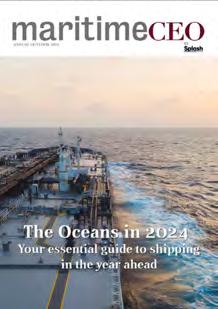













The ultimate markets guide to the coming 12 months
• Publishing in Q1
• Distributed at: Geneva Dry
The world’s most in-depth, global reporting on a booming sector
• Publishing in Q2
• Distributed at: Posidonia, SMM
What’s driving maritime technology in the next 12 months and beyond. The themes and breakthroughs we can expect
• Publishing in Q3






• Distributed at: Splash Singapore, Maritime CEO Forum Monaco
Asia’s World City makes its bid to return to shipping’s top table
• Publishing in Q4





• Distributed at: Hong Kong Maritime Week






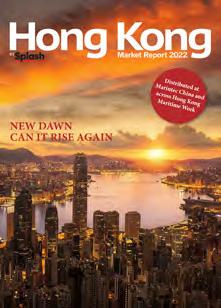






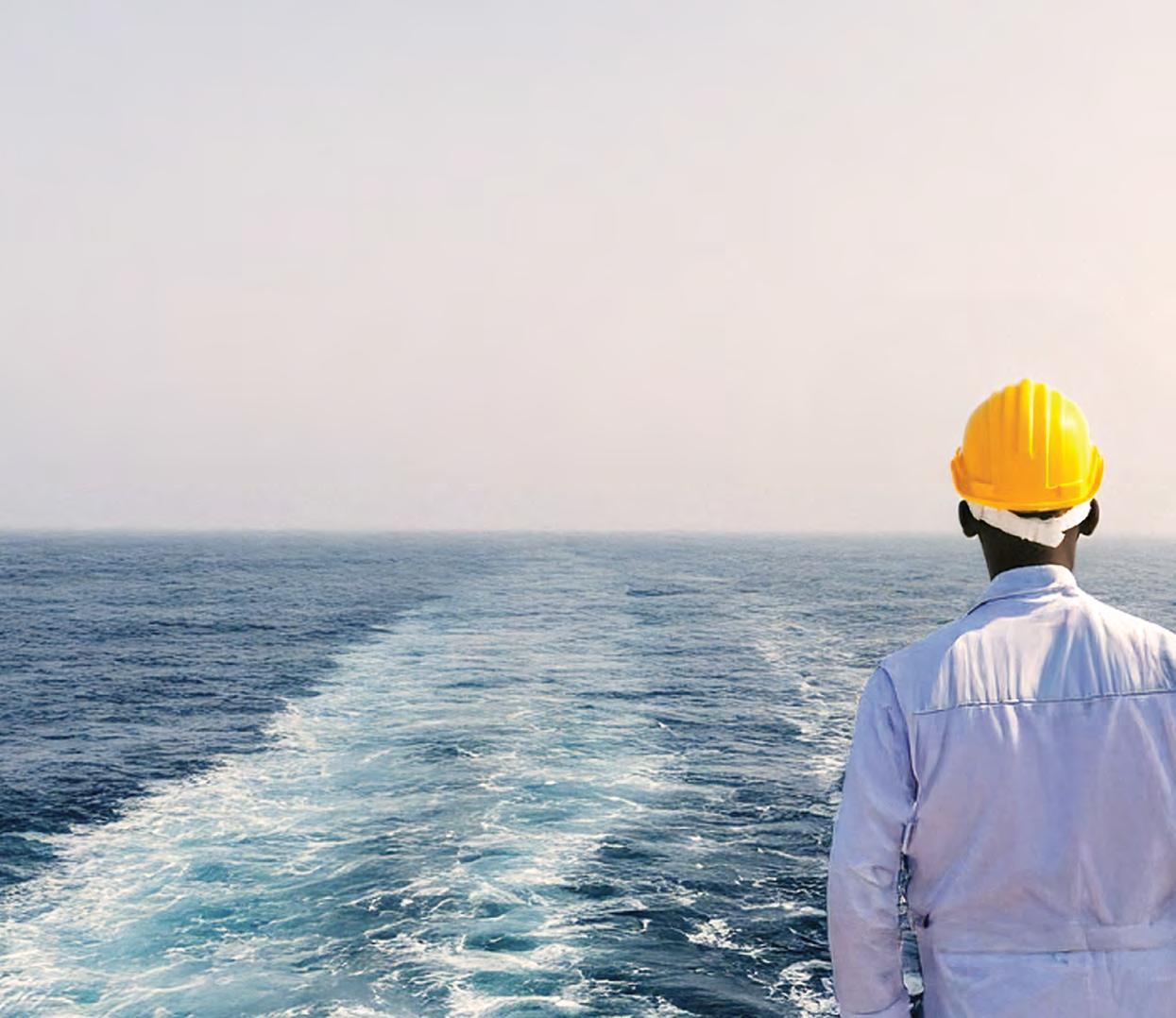
Why fear of artificial intelligence says more about us than about the technology itself. By Giampiero Soncini, member of the board at Oceanly
Recent weeks have seen a sharp rise in cyberattacks targeting different industries across the globe. In the latest survey by the International Chamber of Shipping, cyberattacks now rank among the top four risks facing the maritime industry.
This proves the maritime sector is entering a new era of digital exposure. And, as a result, discussions about the impact of digitalisation and AI on seafarers have never been more timely or misunderstood!
For as long as people have worked, we’ve feared the tools that might one day replace us. The Luddites smashed looms in the 18th century, terrified that machines would end their craft. The same anxiety resurfaced with cars, computers, and now AI.
What we don’t understand, we tend to fear, especially if it threatens our livelihood. And fear sells. News stories run worst-case scenario headlines because they attract readers. As Nobel laureate Daniel Kahneman observed, our first response to change is emotional, not rational.
Even respected leaders feed that fear. One tech CEO recently predicted that “AI will write 90% of all code within six months.” Seven months later, programmers remain in high demand. Scaremongering makes headlines, but it rarely matches reality.
Shipping has lived through disruption before. Every major innovation, from sail
to steam, from sextant to ECDIS, reshaped roles but rarely erased them. AI will be no different.
At first, it will make seafarers’ lives easier by automating repetitive, timeconsuming tasks such as MRV and noon reporting, emission and performance logs, maintenance and purchasing documentation as well as SMS and ISM compliance records.
These are vital but laborious tasks for an overworked crew. AI can process data faster, flag anything that doesn’t look right, and simplify compliance reporting, freeing seafarers to focus on navigation, safety, and decision-making.
At Oceanly, we’ve worked with highfrequency data for over a decade. Our experience proves that intelligent systems don’t replace professionals, they support them. AI provides clarity, consistency, and operational efficiency. Human insight still drives the result.
In the future I think it is only right to assume that automation and remote control will shift some work ashore. Fleet Operation Control Rooms will be able to monitor multiple vessels, staffed by former seafarers who analyse data and coordinate maintenance teams at ports.
That won’t be the end of seafaring, it will be its evolution. Future seafarers will become remote navigators, data interpreters, and automation supervisors. The ships will continuously stream operational data, and AI will analyse
billions of data points. There will still be a role for human input to interpret findings and act accordingly.
The key word here is support. AI assists, it doesn’t decide. Responsibility and judgment always remains with people.
History shows that technology eliminates some jobs but creates many more. Cars replaced horse grooms but created mechanics and engineers. The digital era ended typewriters but launched entire new professions.
Resisting change only delays the inevitable and risks falling behind more forward-thinking companies. Preparing for this means identifying at-risk roles and investing in retraining, not retreating from the inevitable. Fighter jet pilots became drone operators; seafarers can just as effectively become data specialists and remote-operation experts.
In my view, protecting old roles for sentiment’s sake only weakens the industry. Preparing for the future means shaping it, not fighting it.
AI is simply the next innovation. At Oceanly, we believe its purpose is clear, to help maritime professionals work smarter, safer, and faster. So instead of asking, “Will AI take away seafarers’ jobs?” let’s ask, “How can AI help them do those jobs better?”
The future of shipping isn’t about replacing humans, it’s about equipping them to steer maritime’s next wave of innovation.










Captain



Ithink we have all seen the nature of news these days has changed a great deal in the past 20 years, with the dawn of the internet and the information revolution.
Instead of the daily newspaper and news programming on a small number of channels three times a day, the news media has unlimited online space to fill –and it must fill that space 24 hours a day.
The appetite for supplying news stories means we have an endless supply of bad news with clickbait headlines, designed to catch your attention.
And maritime news is no different. Anyone who knows me well enough will be aware that I deal with actual facts – and as we have this Splash Seafarers special coming around, it’s time to present the world with those facts.
Rightly so, people are keen to stamp out sexual harassment onboard vessels. But the data that we are seeing reported is wildly inaccurate from sources that cannot be verified.
The fact is sexual harassment in our industry is not worse than many sectors on land. Of course that does not mean we ever want to be complacent, far from it.
There is a lot of good to say about a career in the maritime industry, and very few people are saying it.
For instance; while women fight to gain pay equality in other industries even today, in the maritime industry we have had equal pay for male and female seafarers for many decades.
While many nationalities have faced racial discrimination for many decades in entering certain industries, the maritime industry is one of the most diverse sectors in the world.
According to the International Labour Organization many Southeast Asian countries are among the world’s top maritime countries, as the sector employs more than 2m workers in both Indonesia and Vietnam, more than 1.8m in the Philippines, more than 1m in Thailand, and hundreds of thousands in Myanmar
It’s time to build up our industry instead of tearing it down
and Cambodia. That includes people working in our industry, especially the cruise industry.
So what can be done to make our industry better?
What we don’t have is a whistleblowing system, which allows a full and proper reporting of wrongdoing. It is a requirement under EU law, but we still don’t have one. It is also a fact that many other industries also do not have a system of this nature in place – so why cannot the maritime industry be better than others, and put one in place?
It’s time to build up our industry instead of tearing it down. We are here and ready to promote ourselves in the world as modern and forward-thinking; ready to welcome a new generation to our crews.

Roughly 1.9m seafarers work the world merchant fleet of about 74,000 commercial vessels
Top supplying countries:







Philippines (20–25%)
Regional supply (broad split)
~4% of the global workforce
Minimum
(used as a global guideline) has slowly improved from
Women remain a very small share of the seafaring workforce ~1–2% of global seafarers
Seafarers work for 11.5 hours a day, rest for 10.8 hours, and sleeping for 7.0 hours, working on average 74.9 hours per week, significantly higher than the global 43 hours per week identified by the International Labor Organization Seafarer shortages are reported to be at 17-year highs in 2025


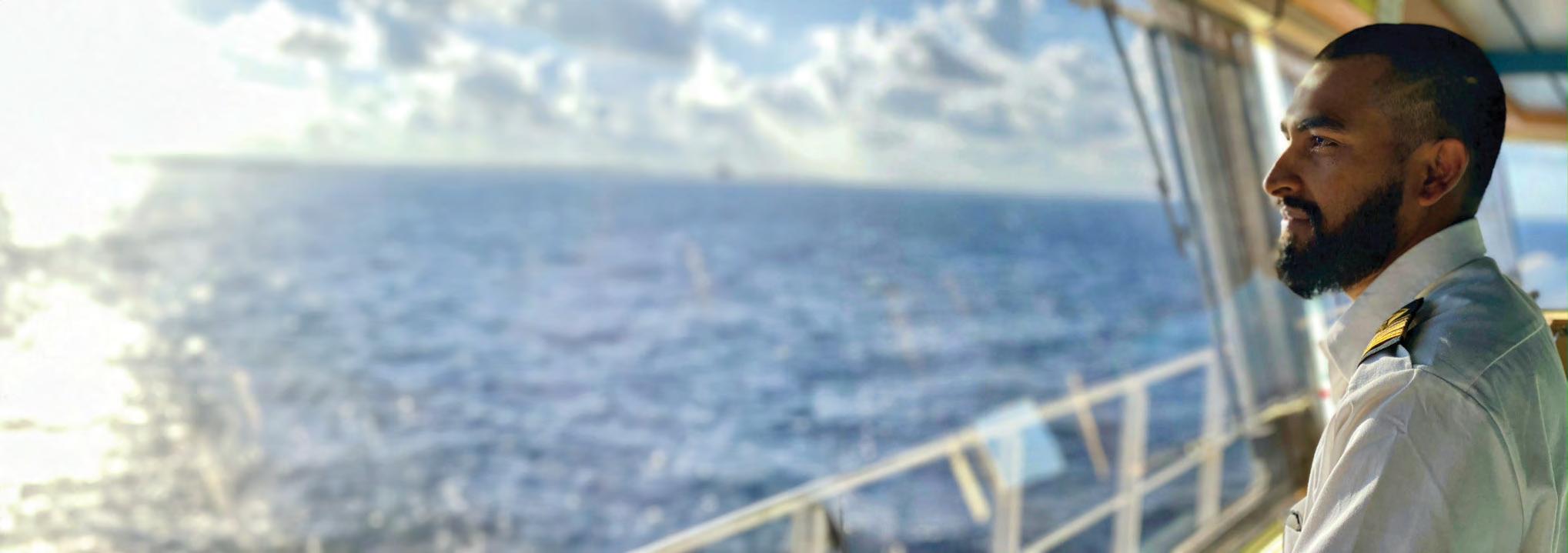

We invest in the growth, development, and wellbeing of our people. We collaborate with our partners and customers to shape the future of the industry, together.
27,000+ Seafarers
1,300+ Onshore professionals